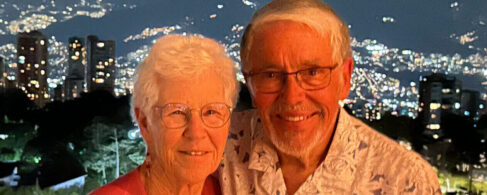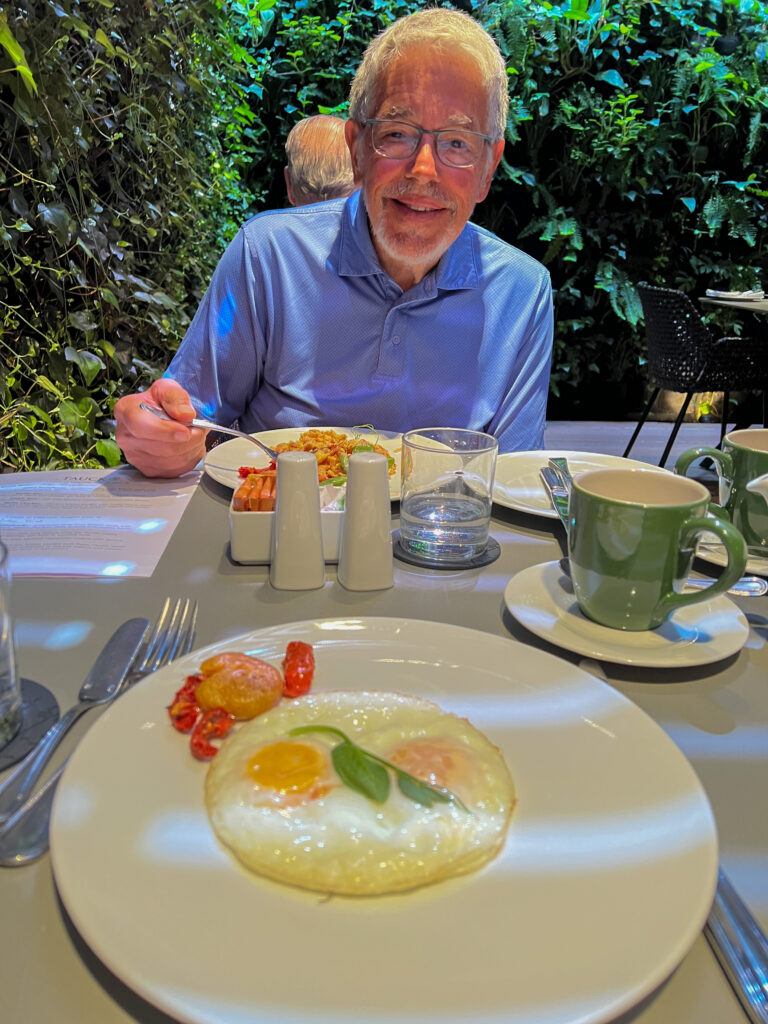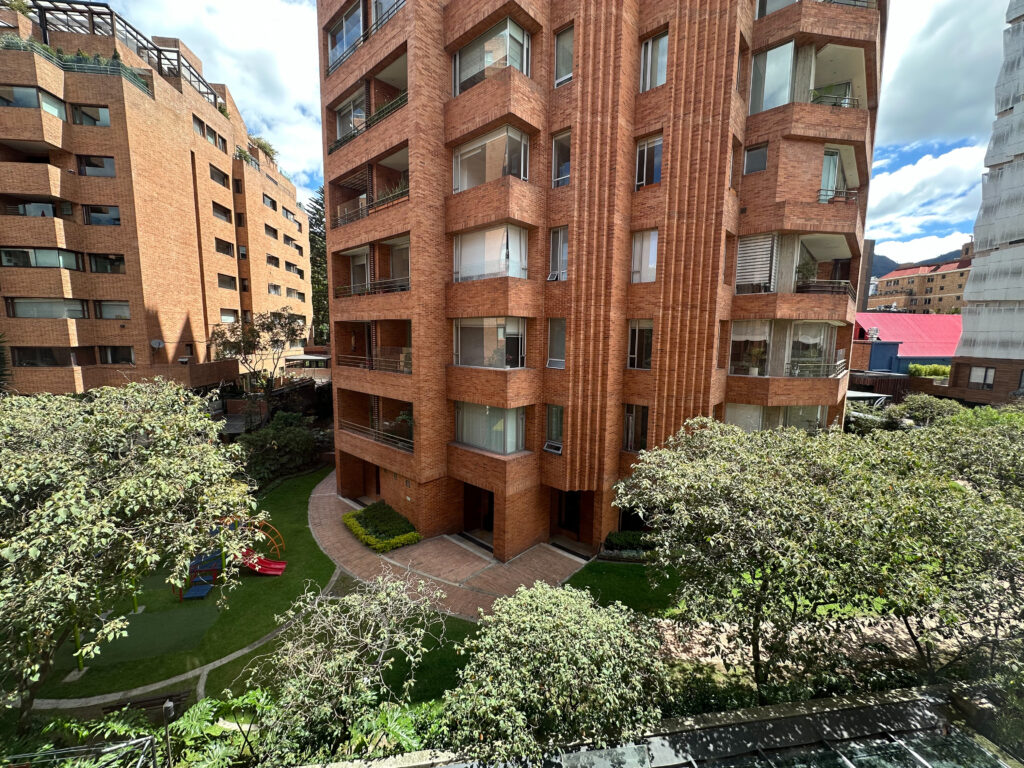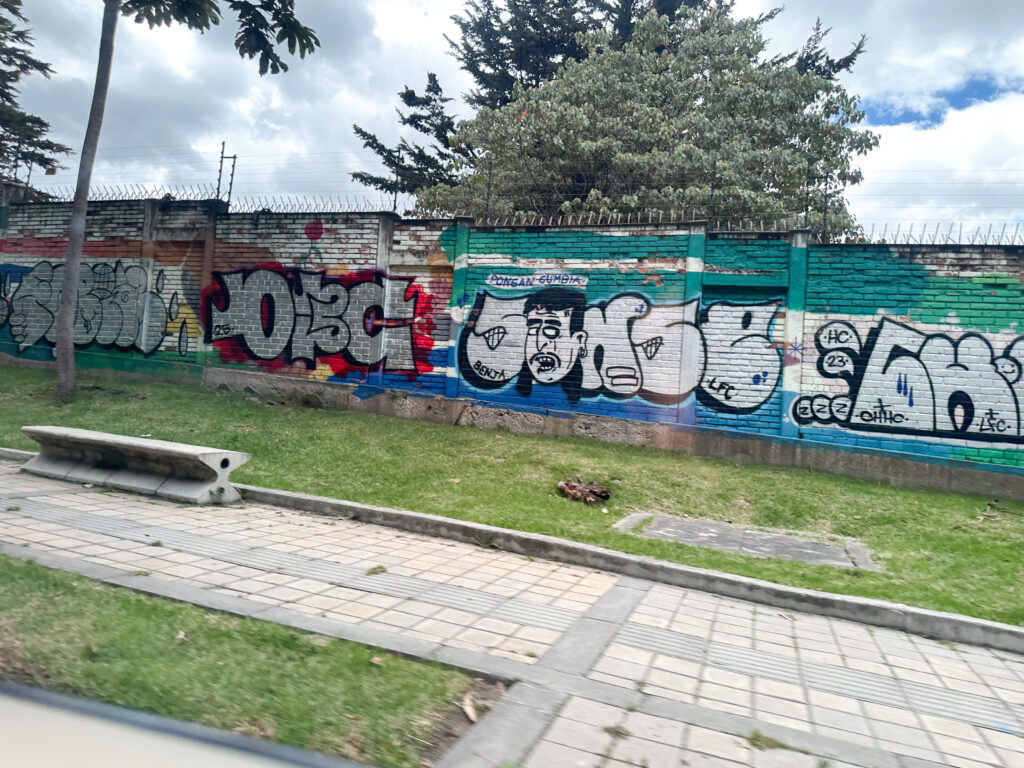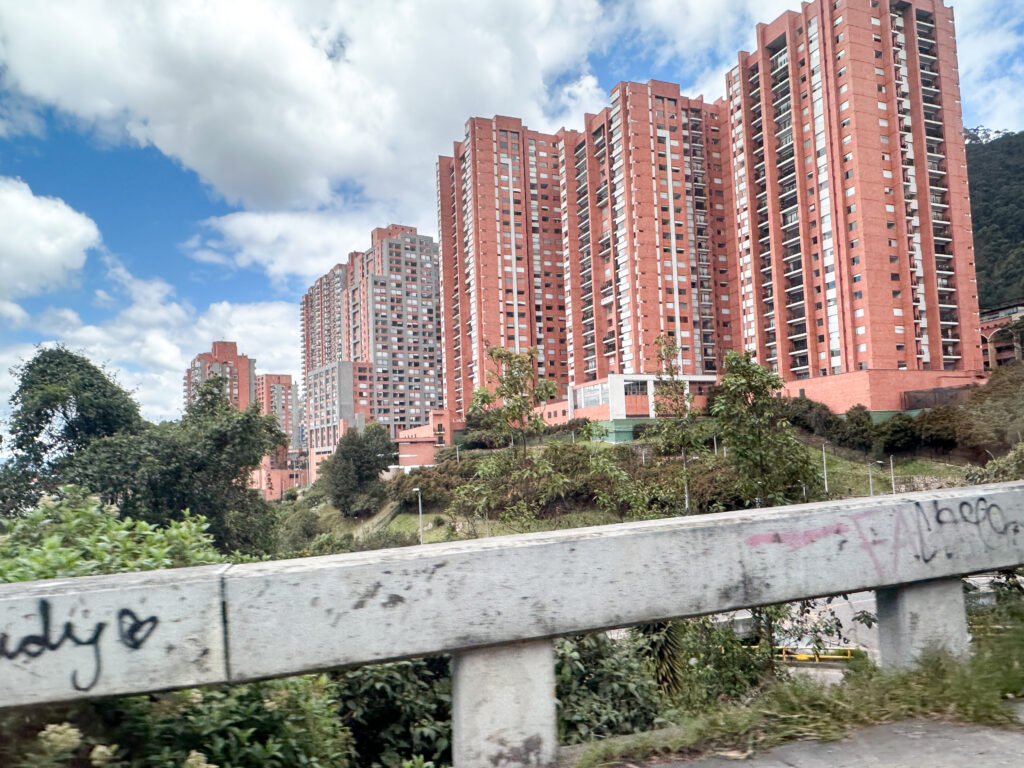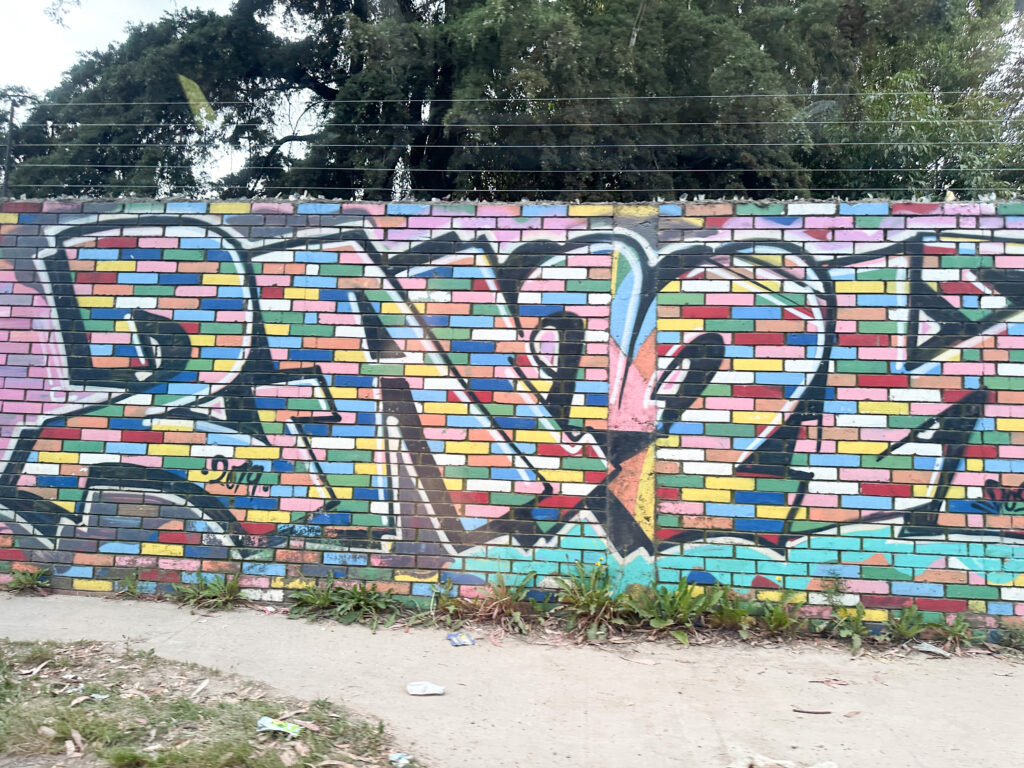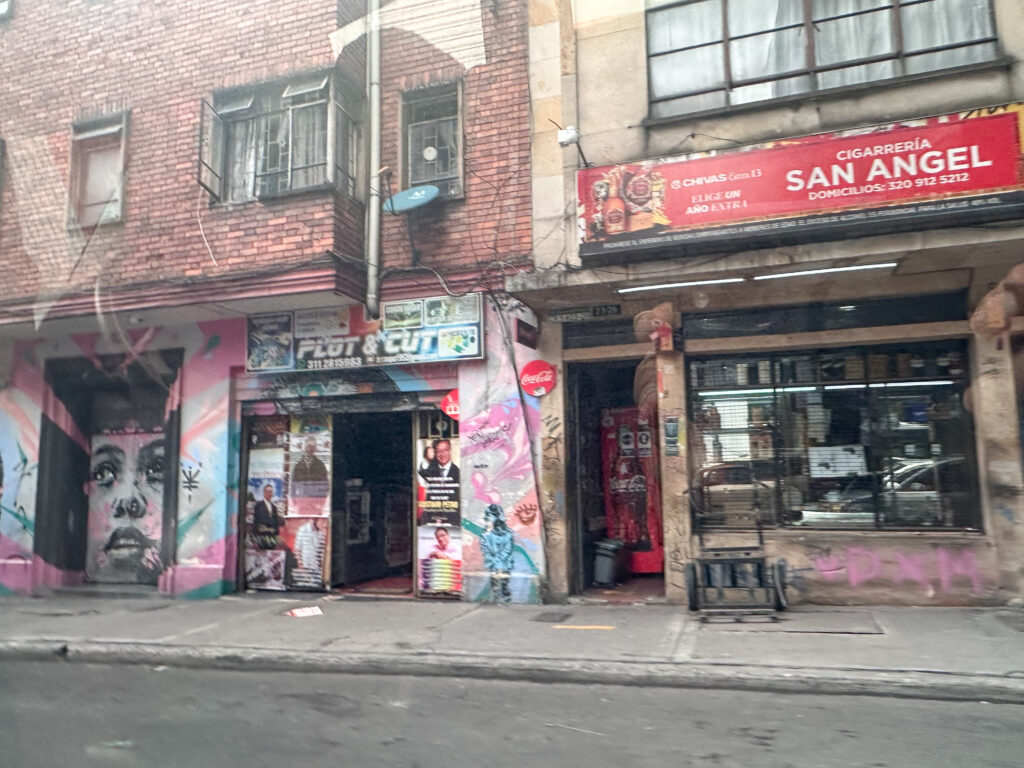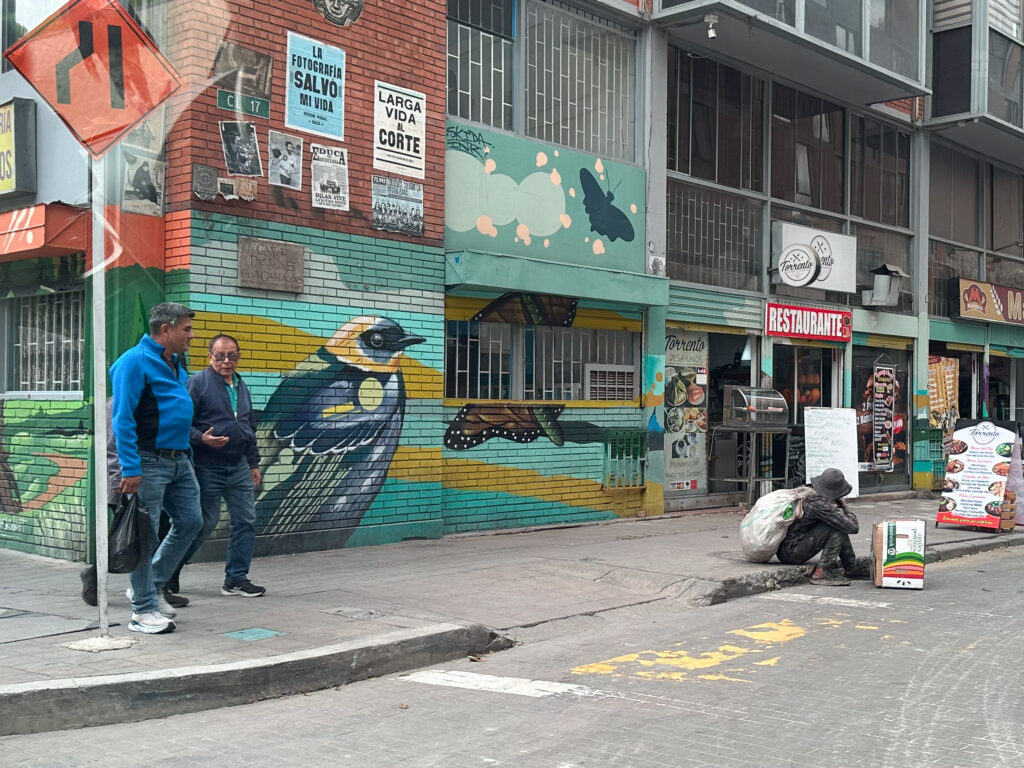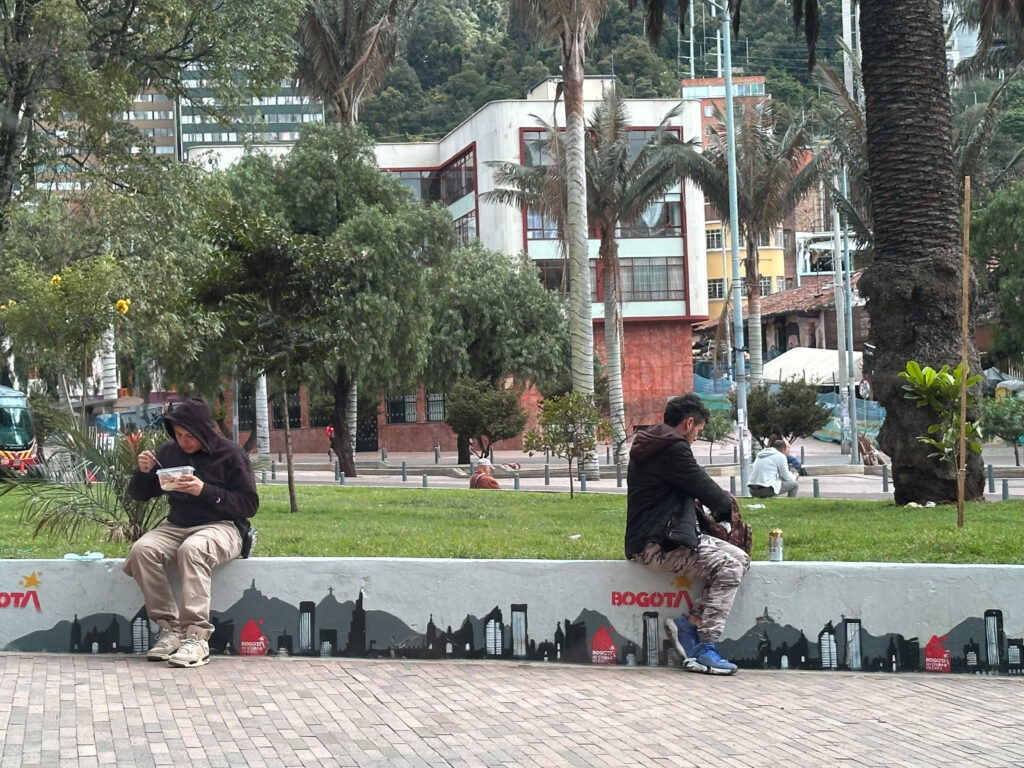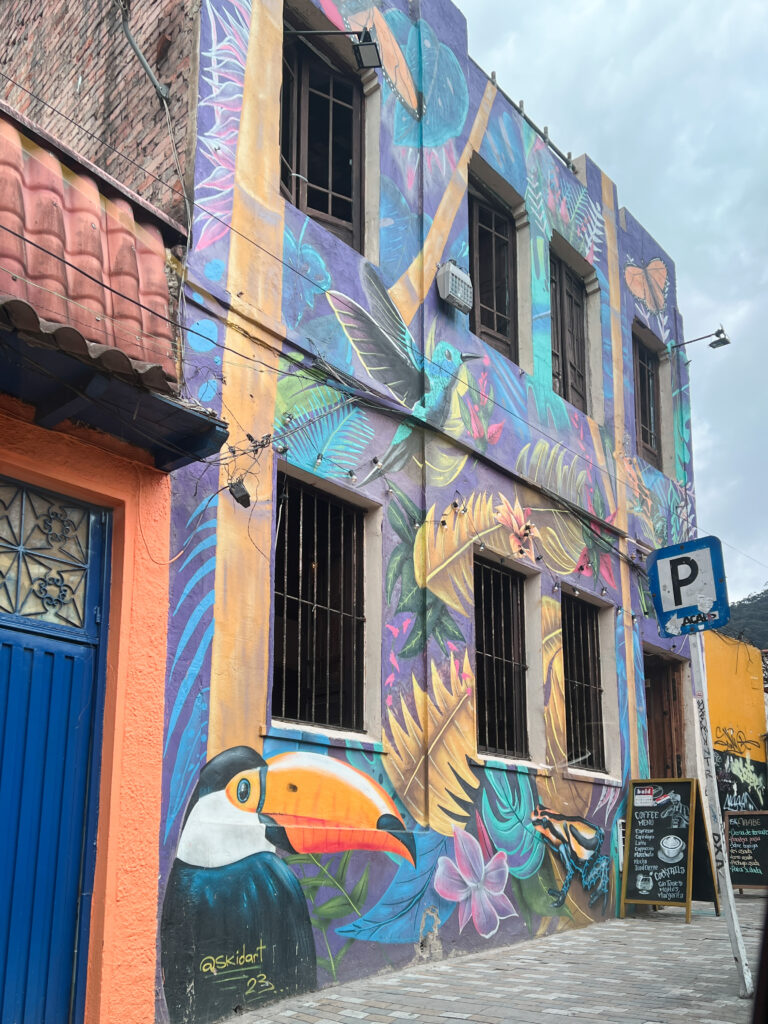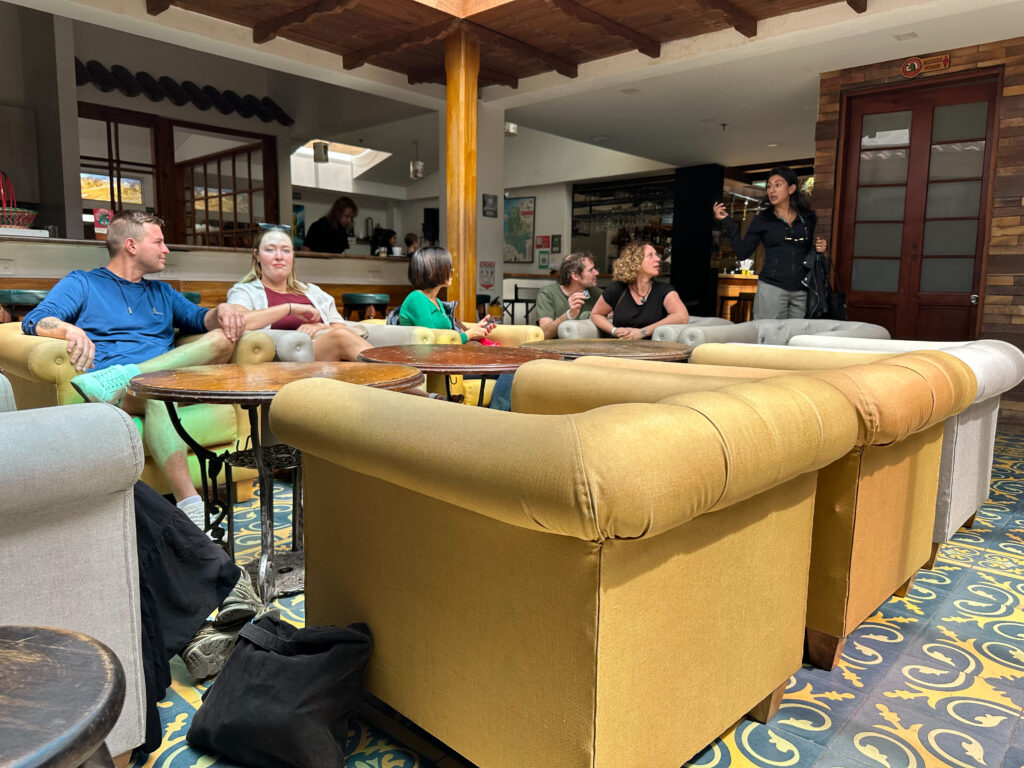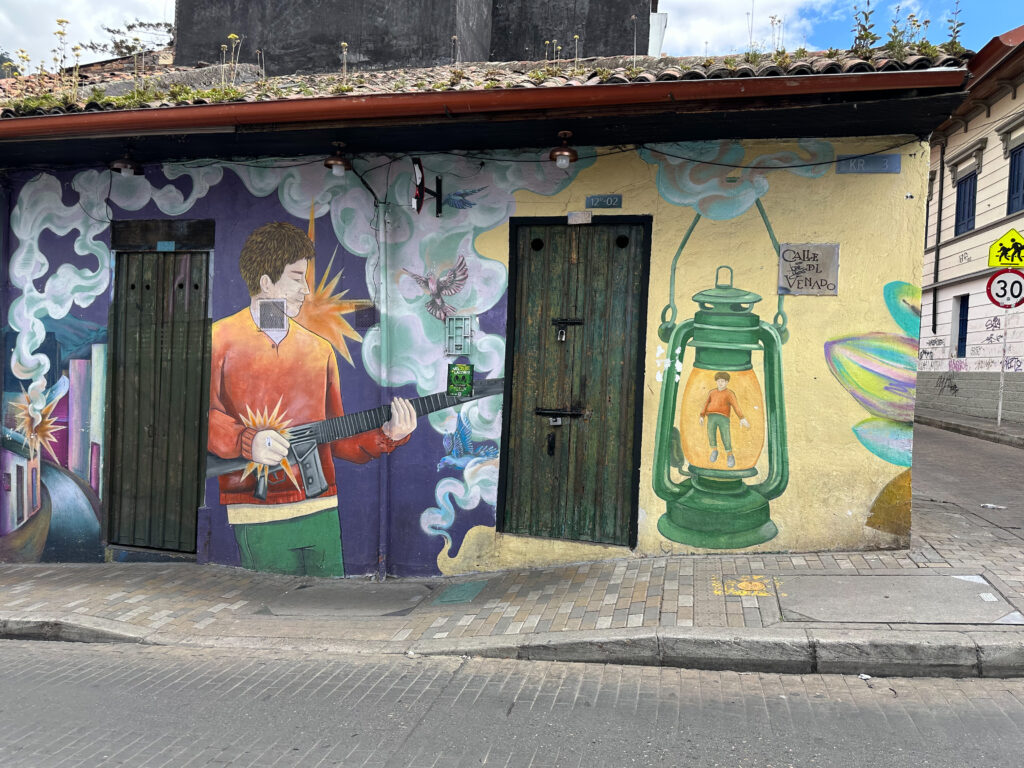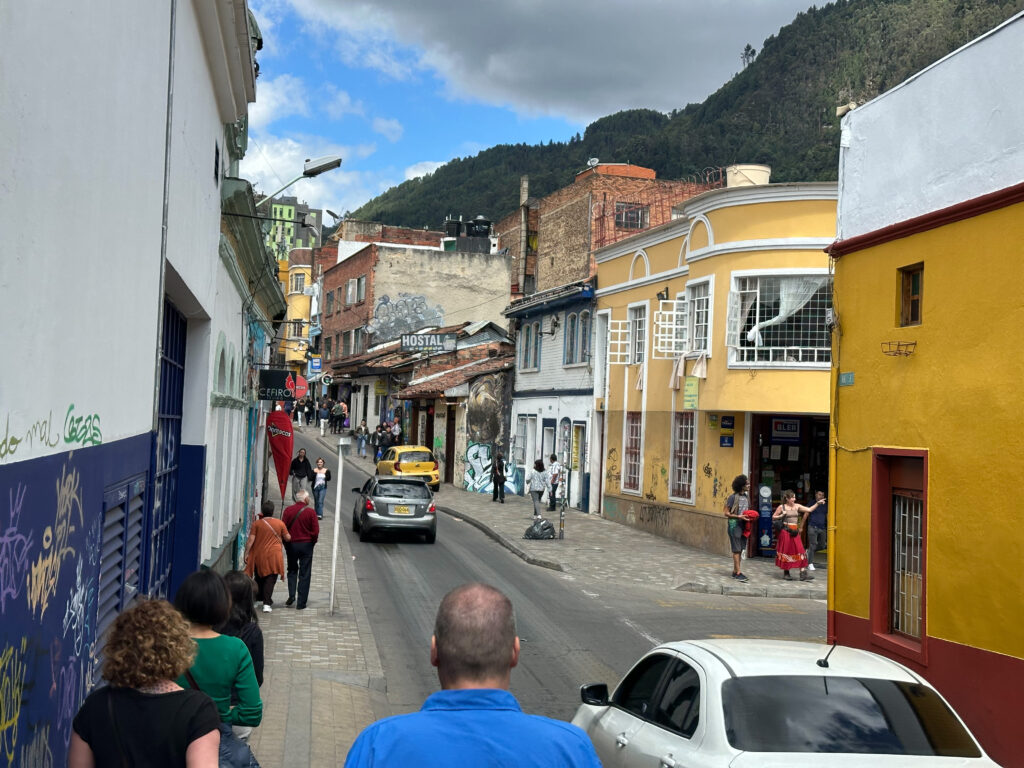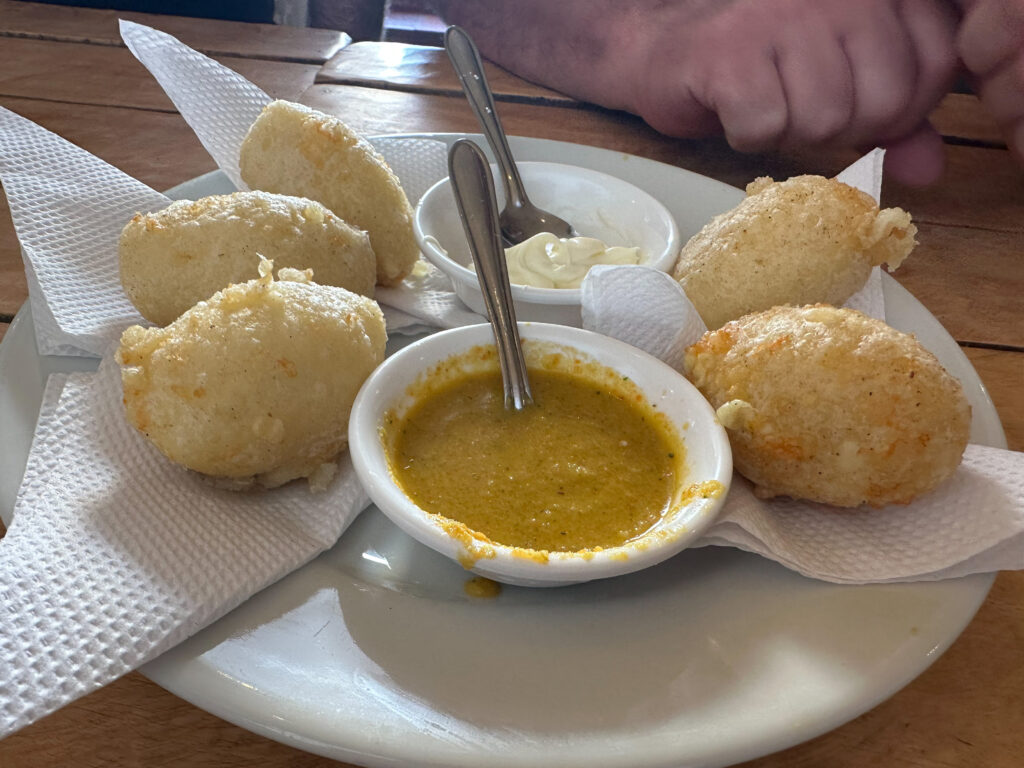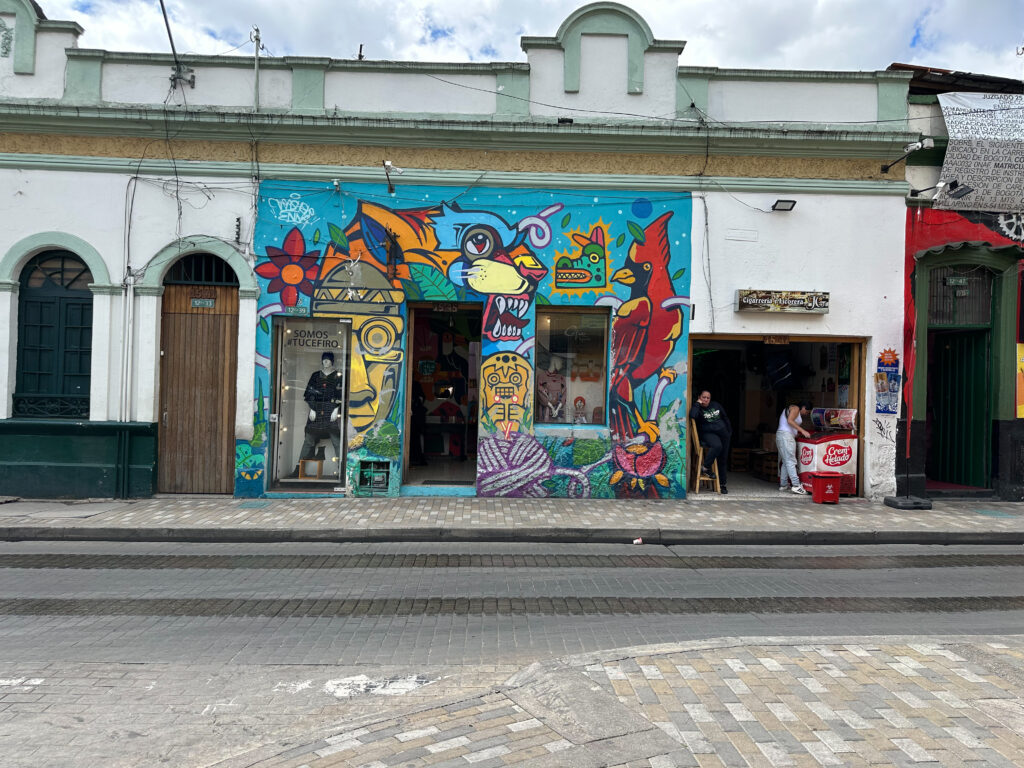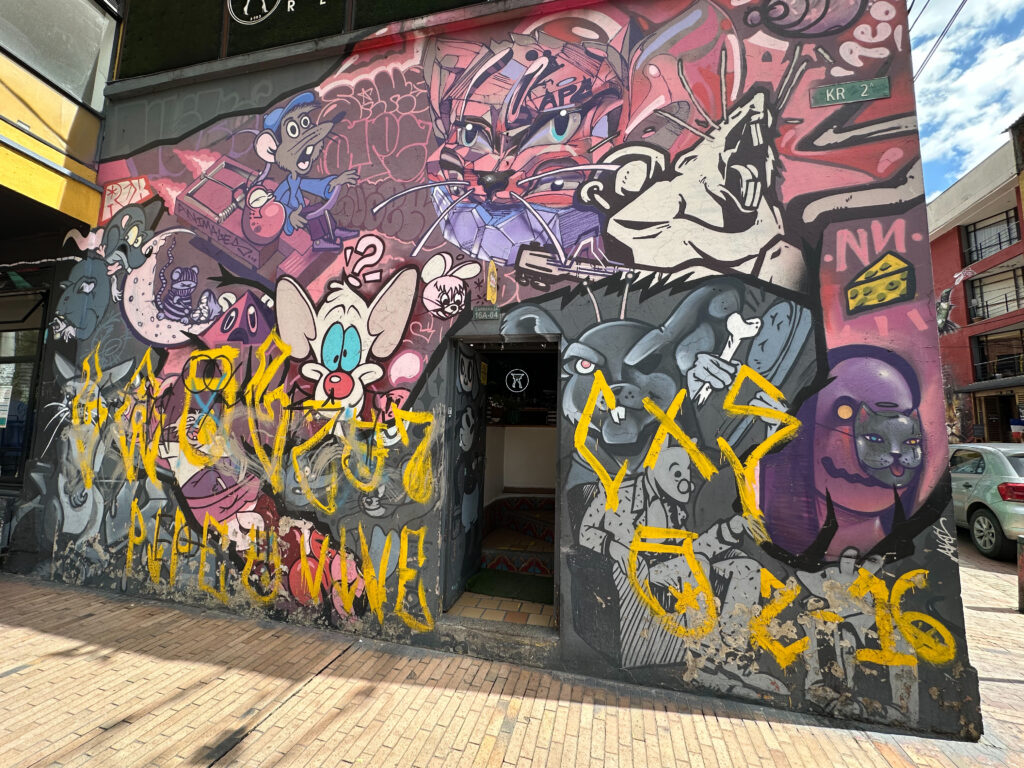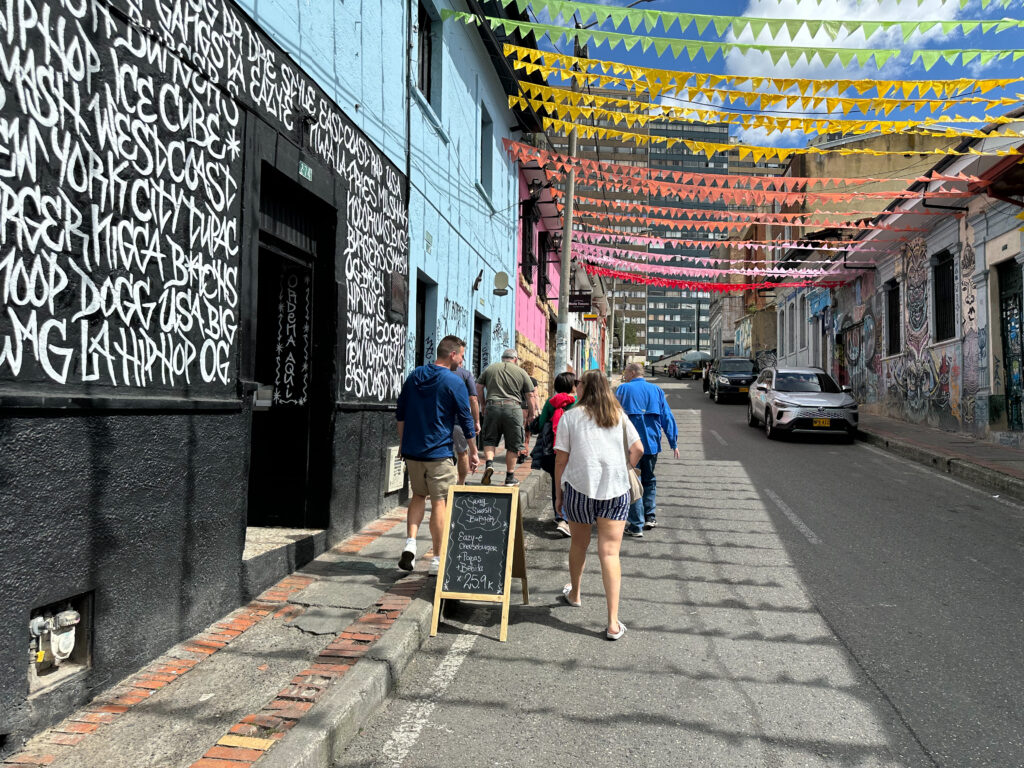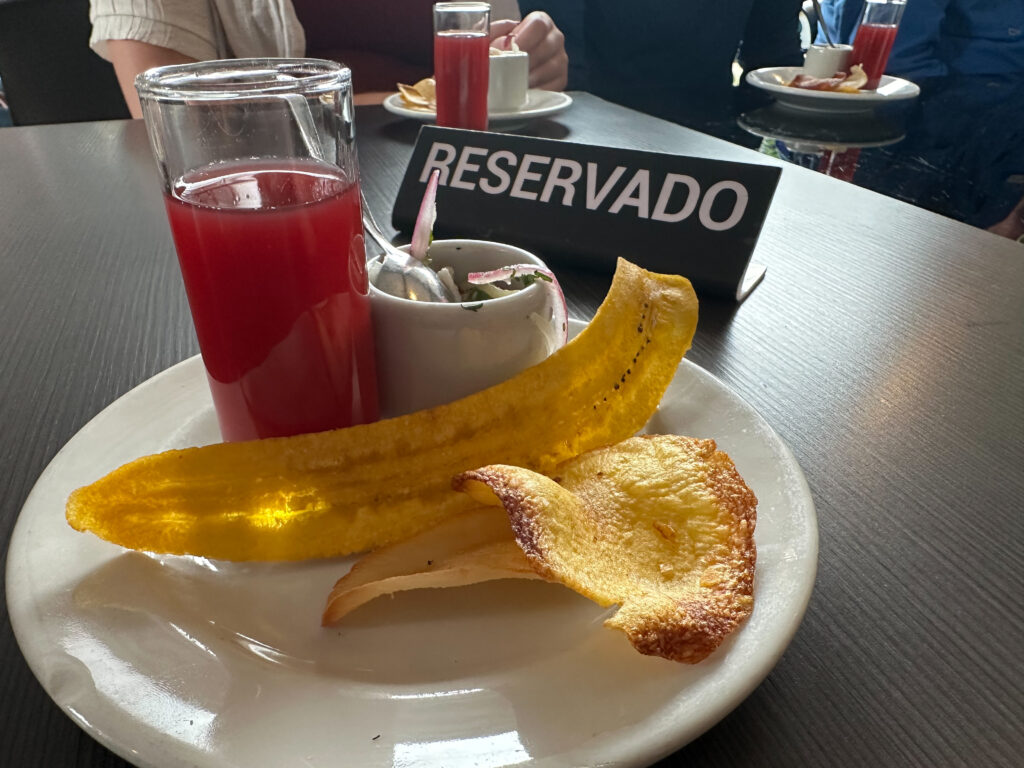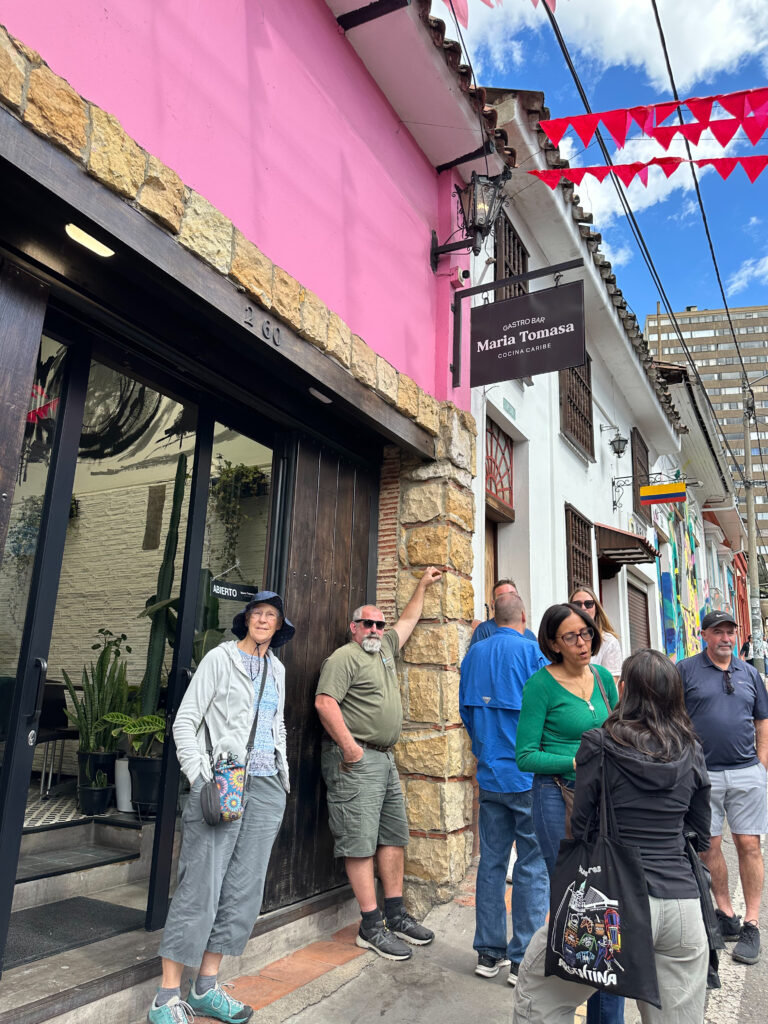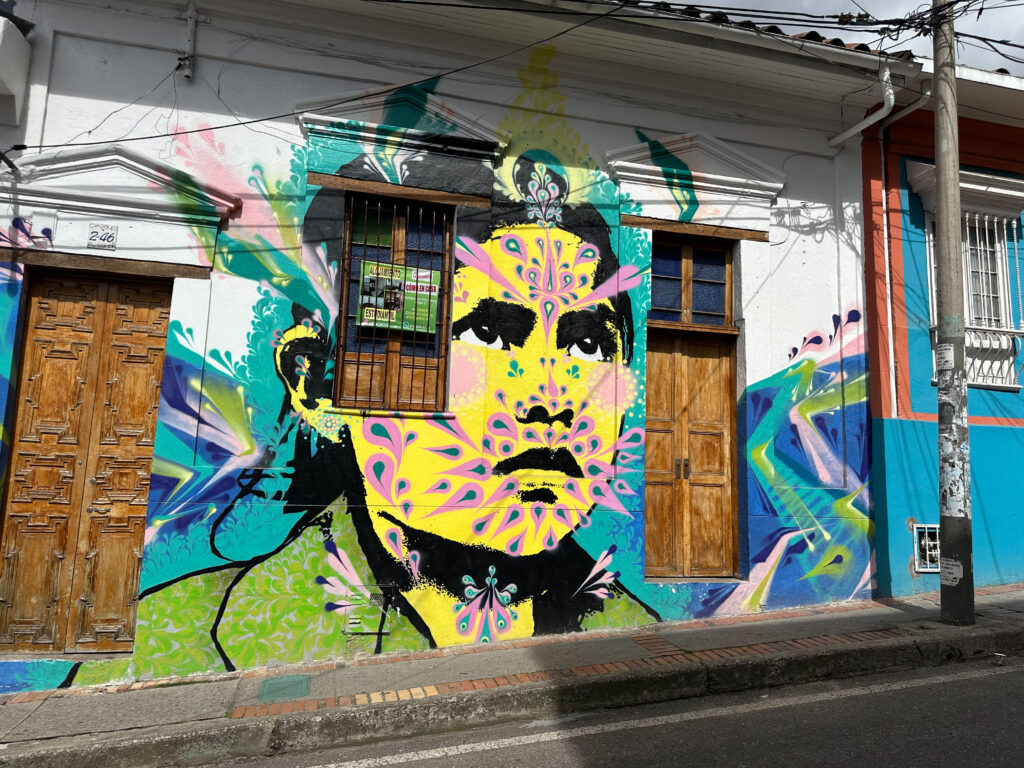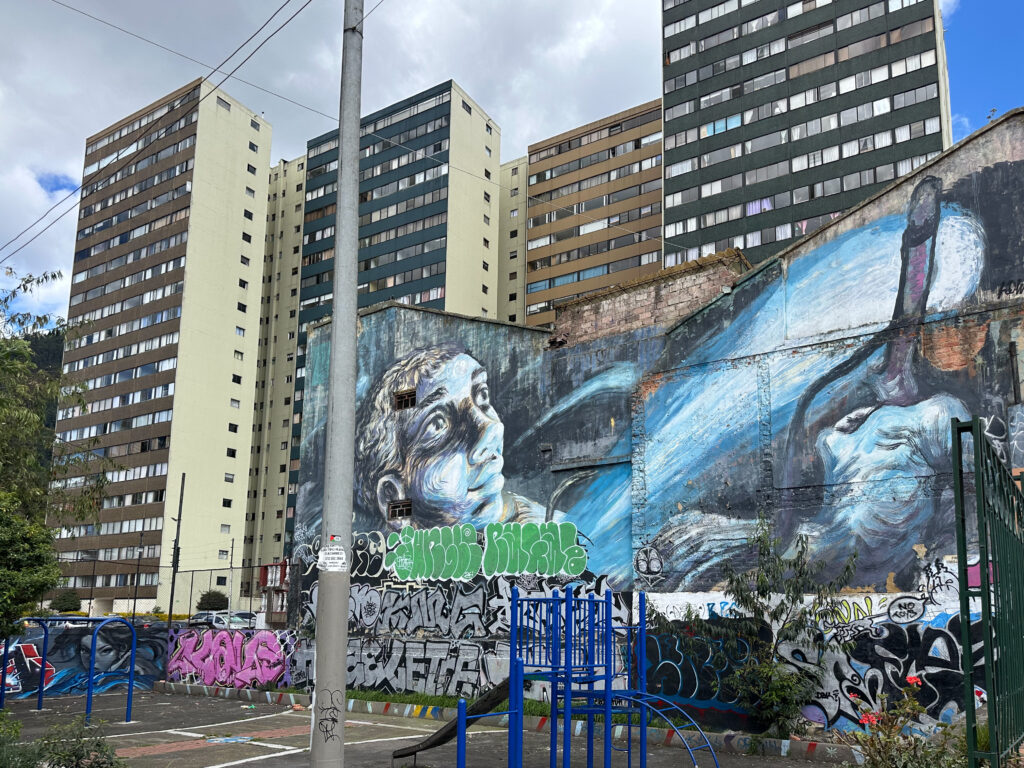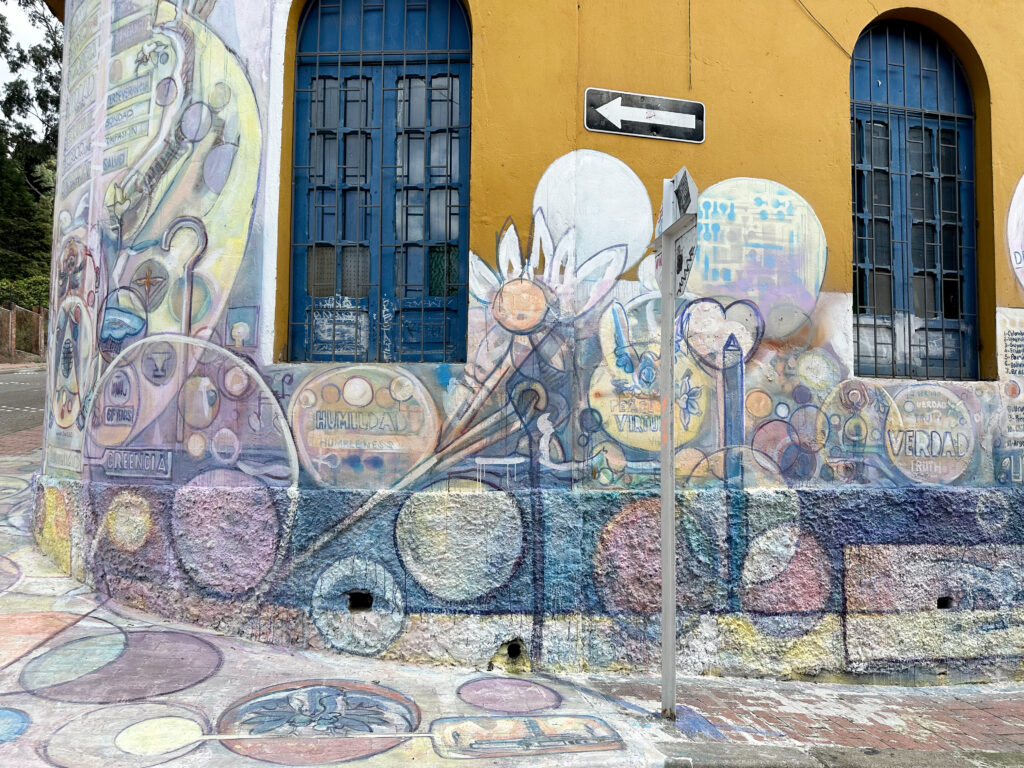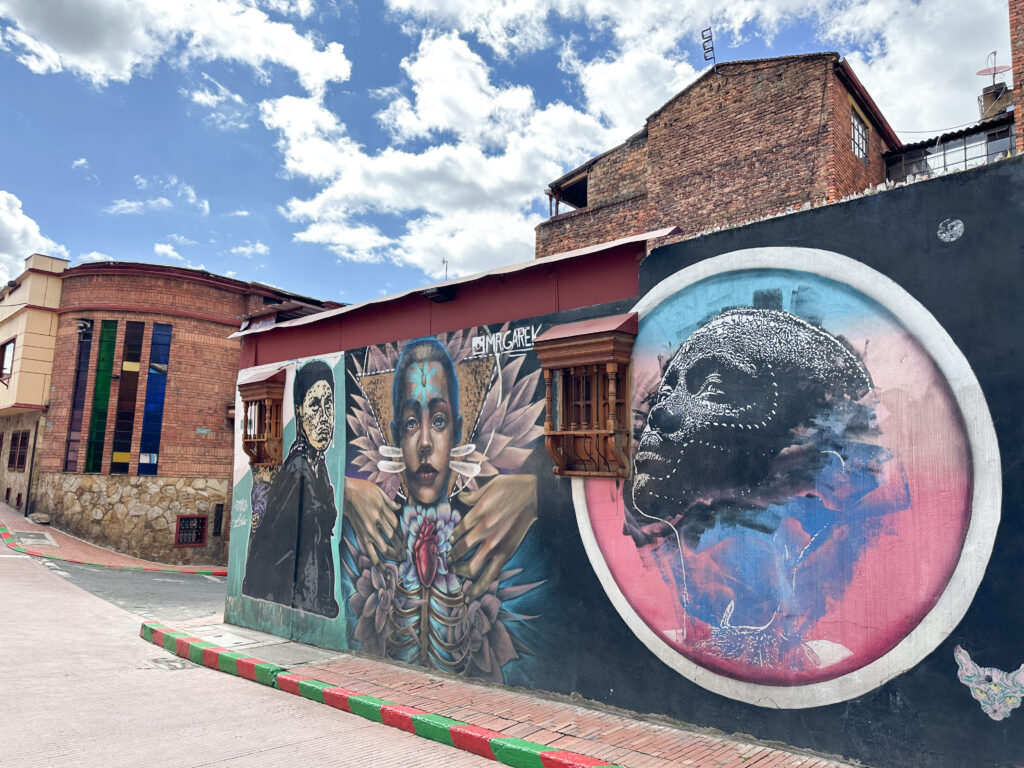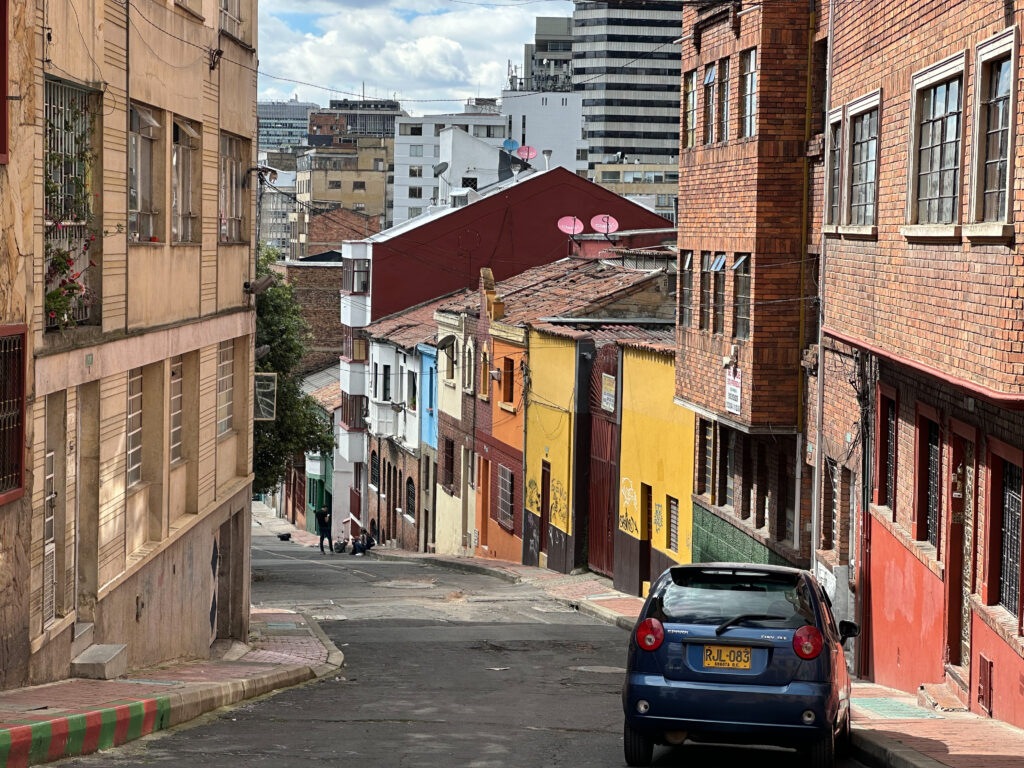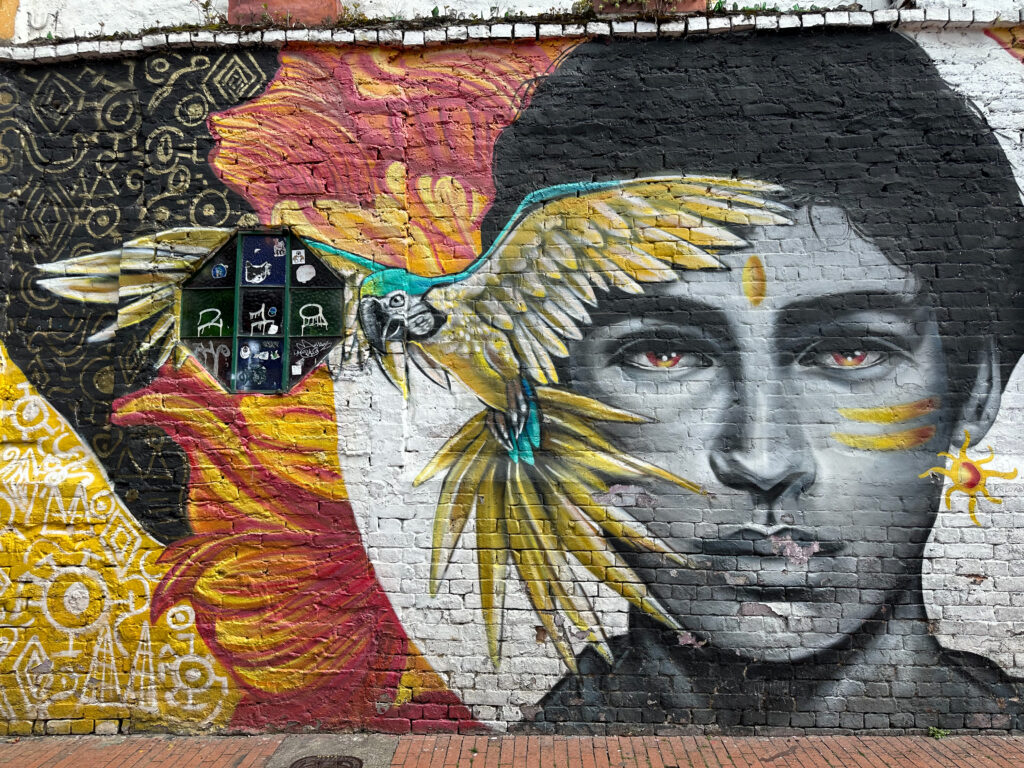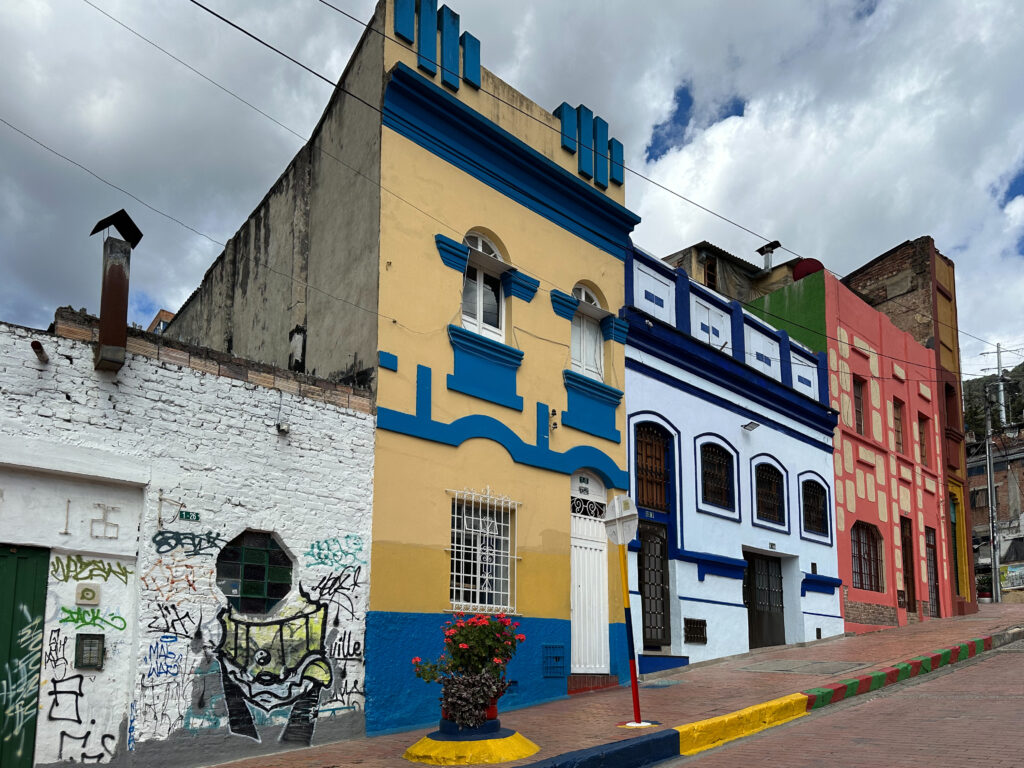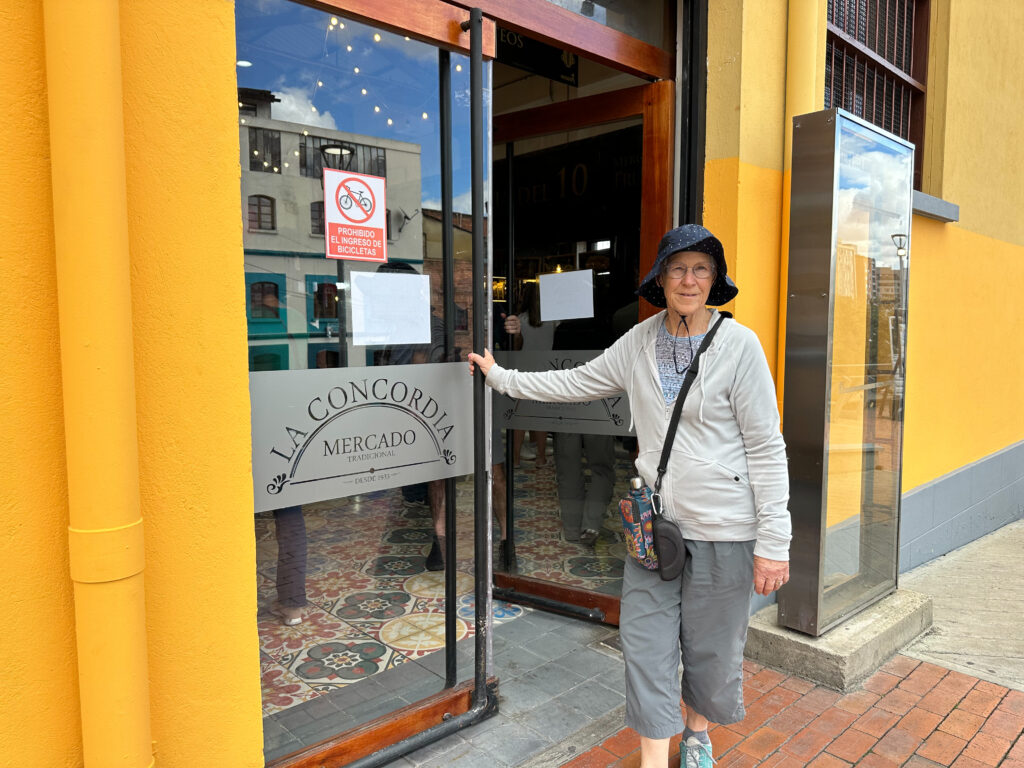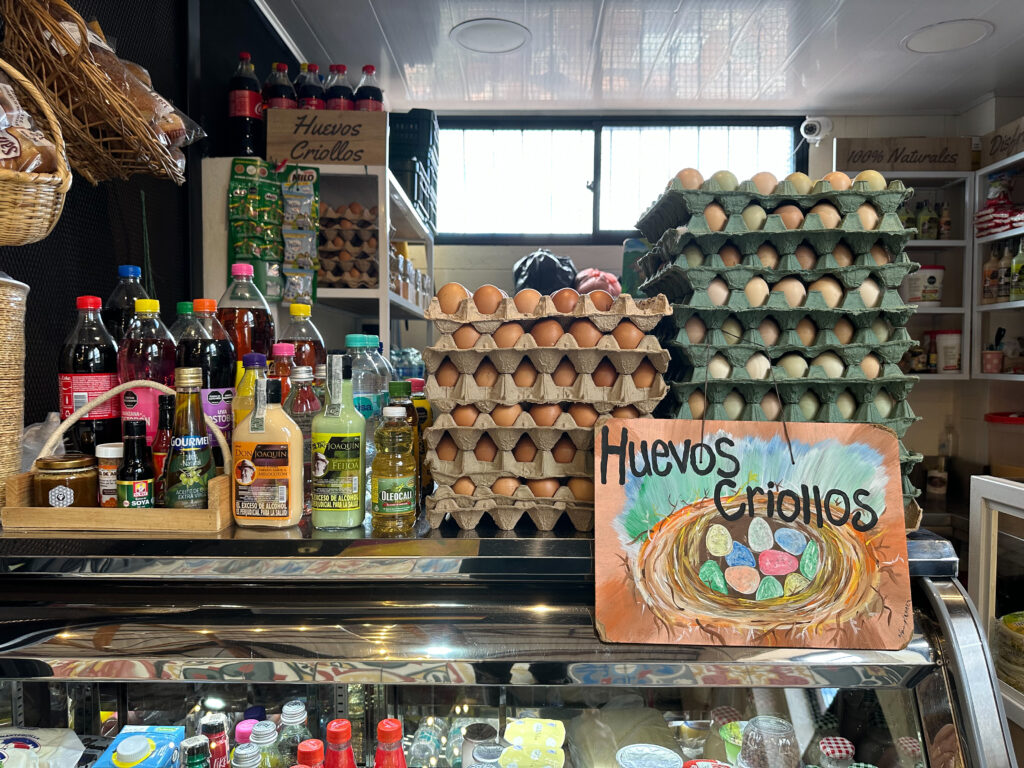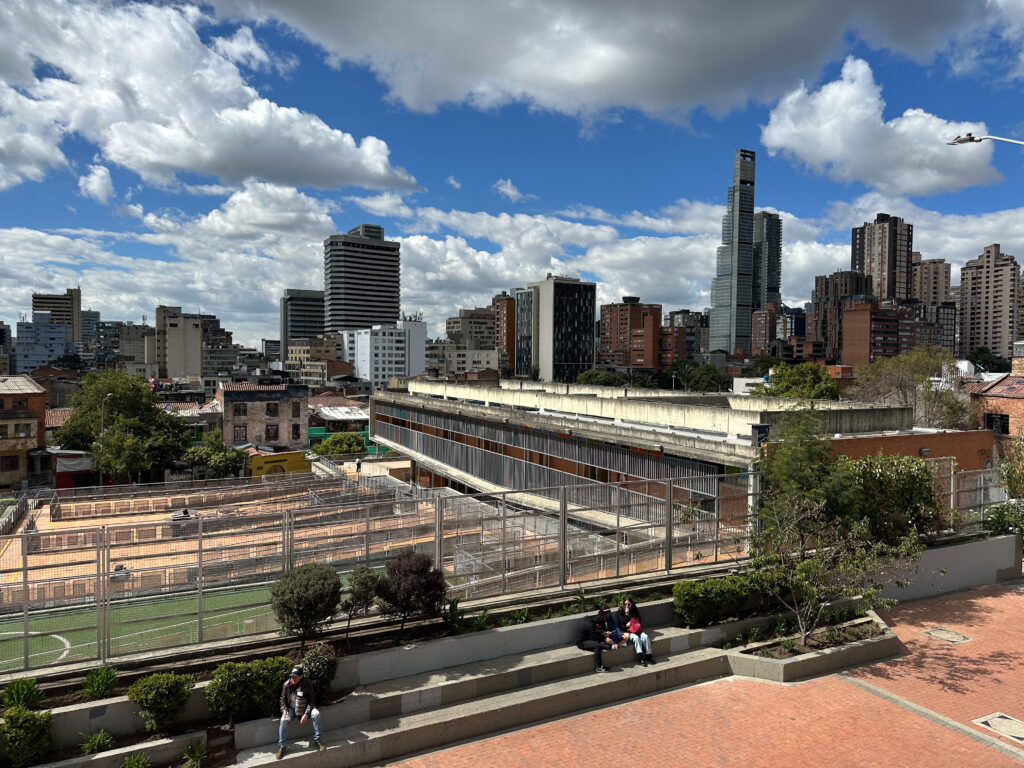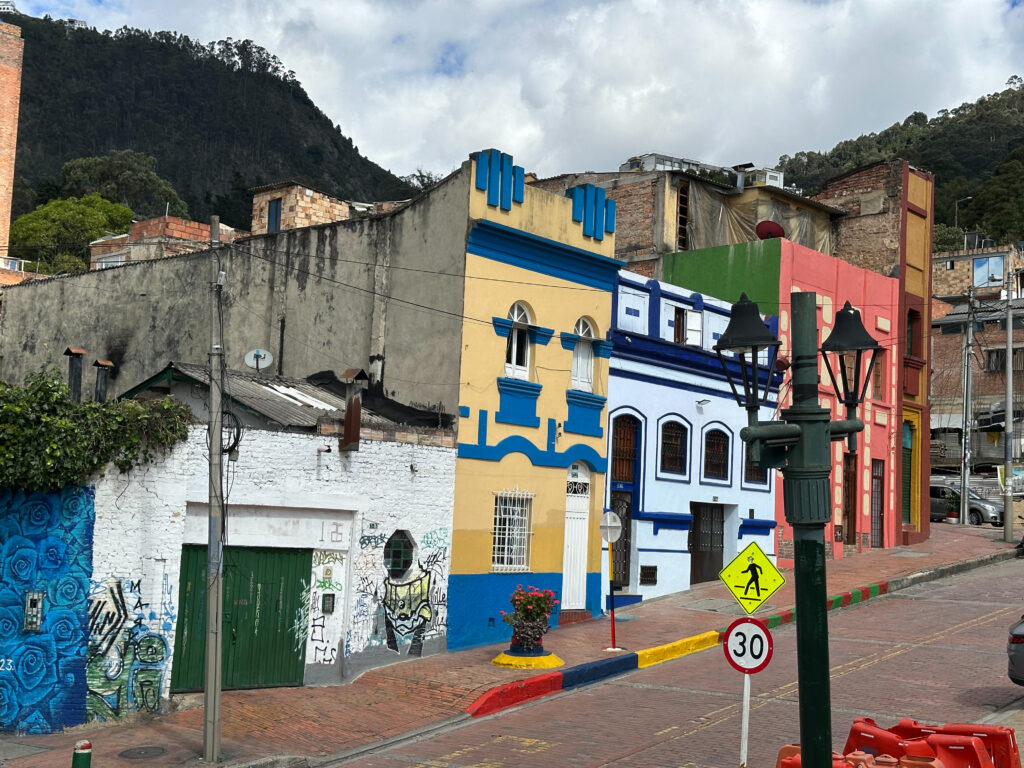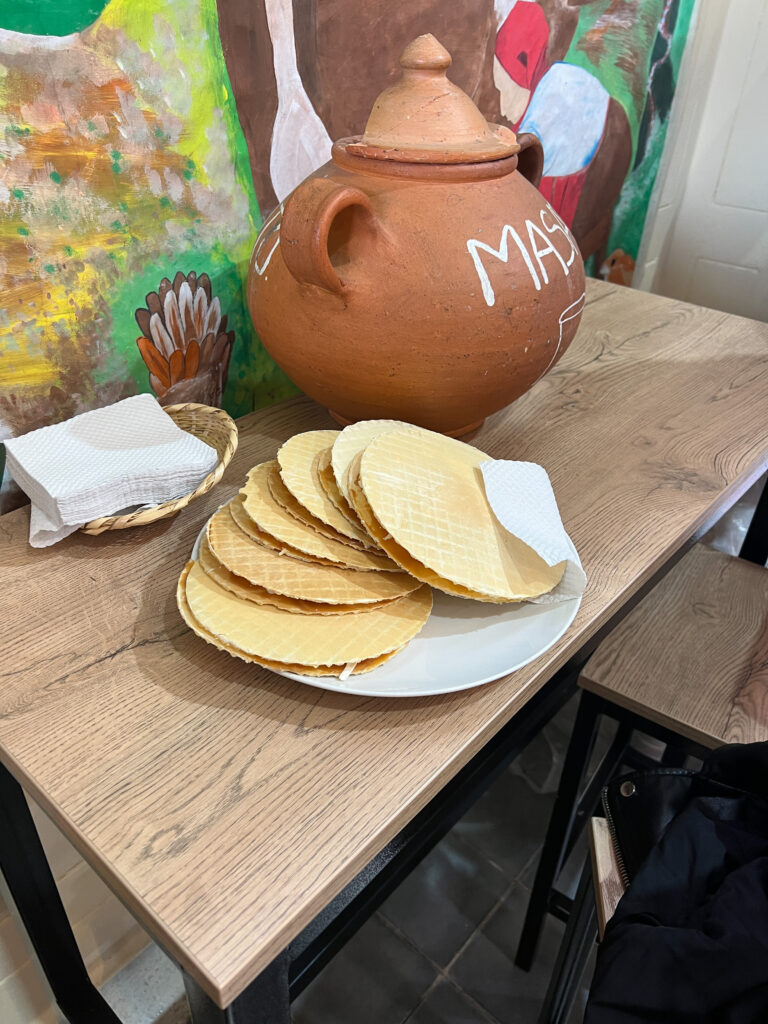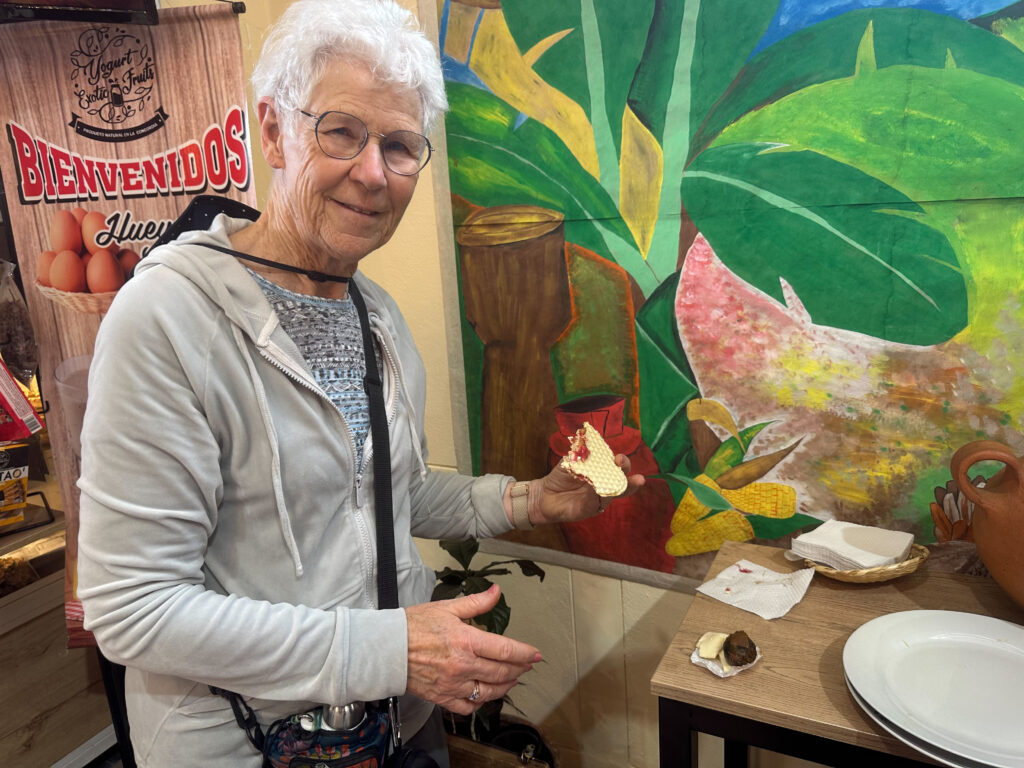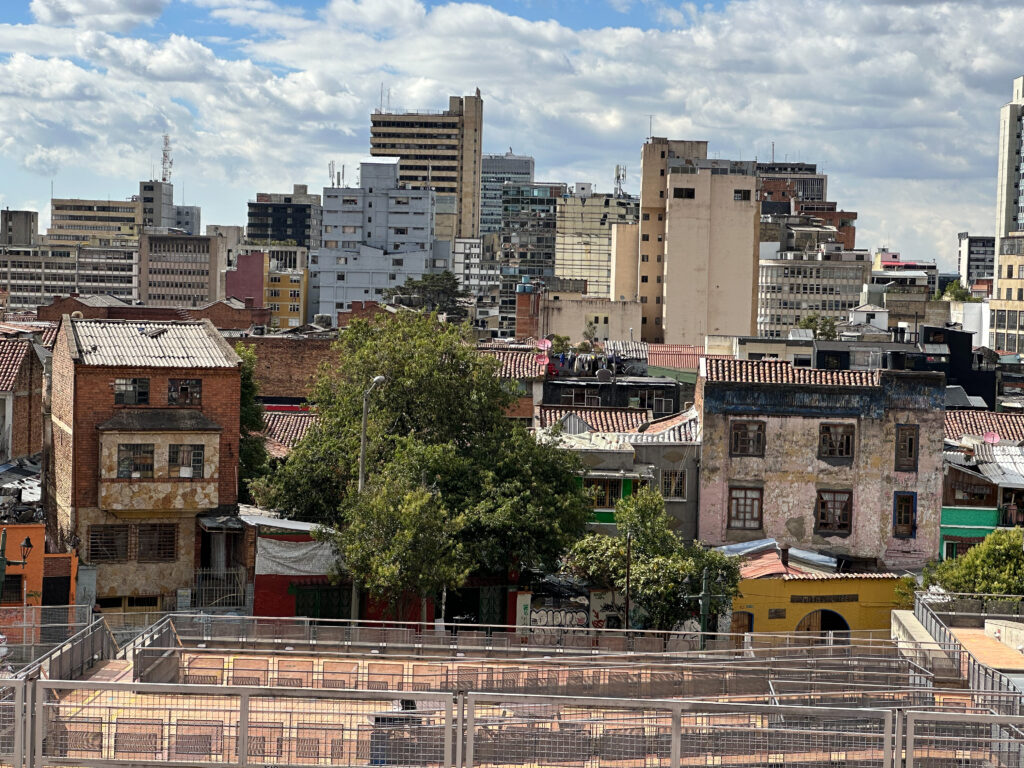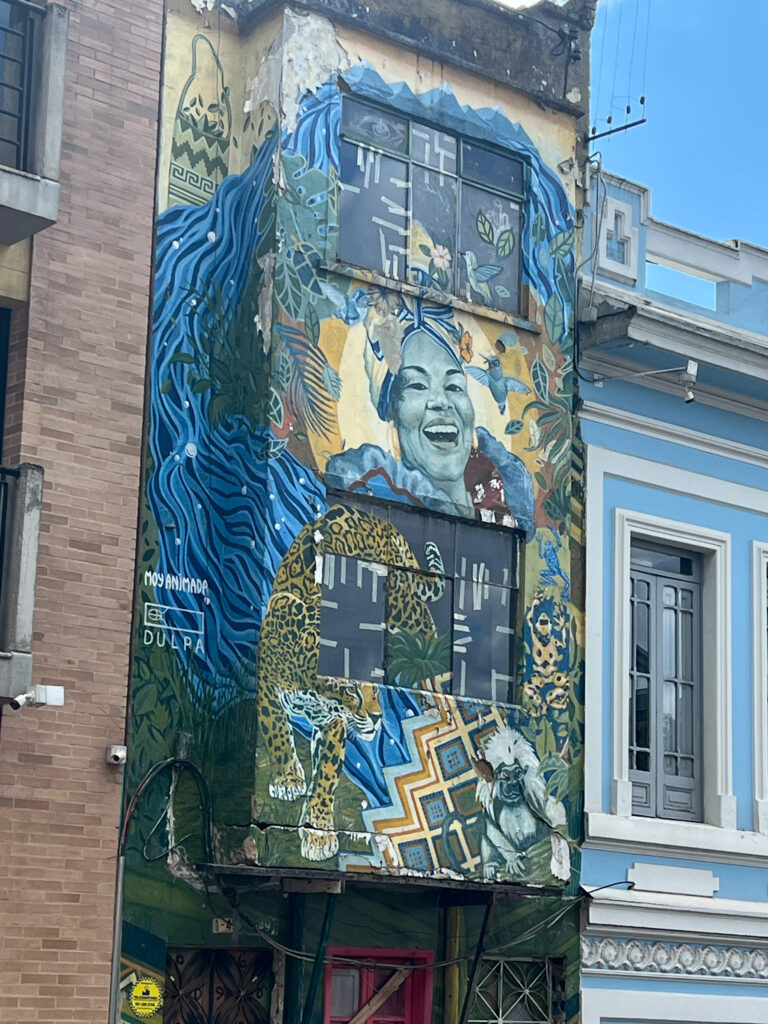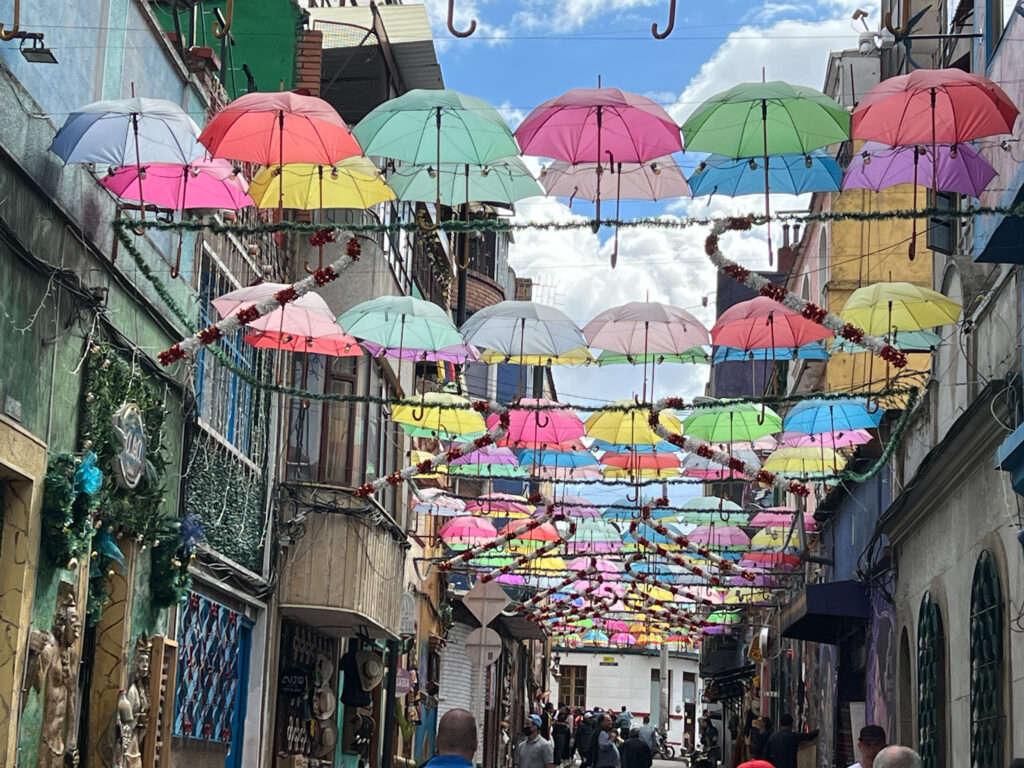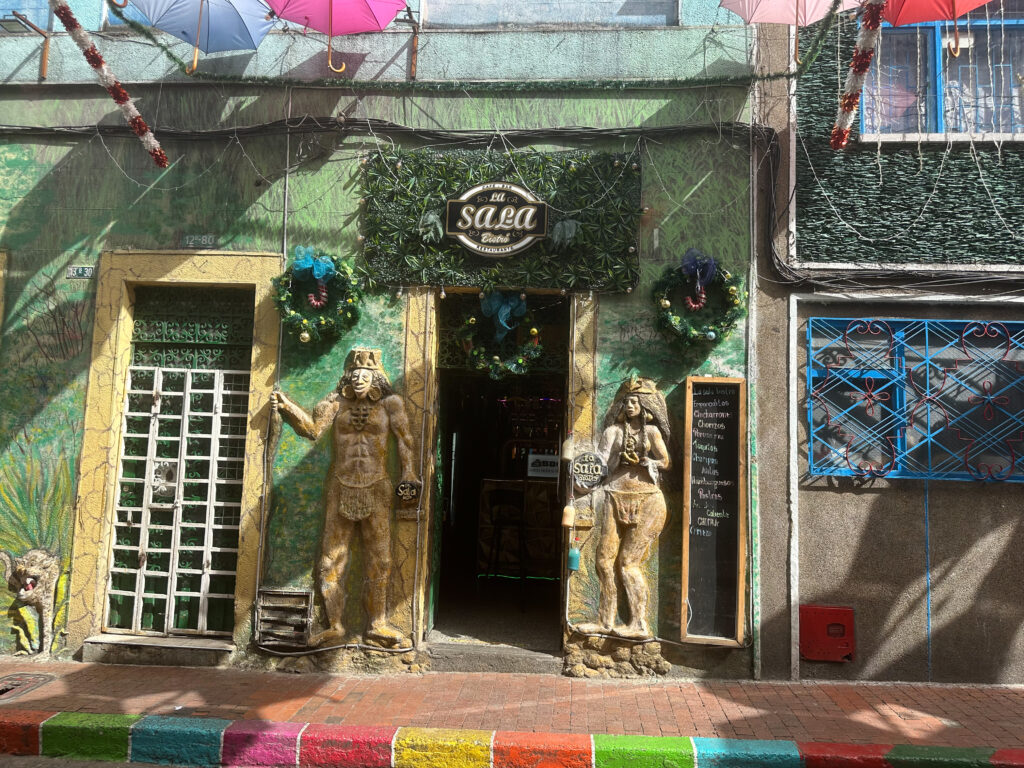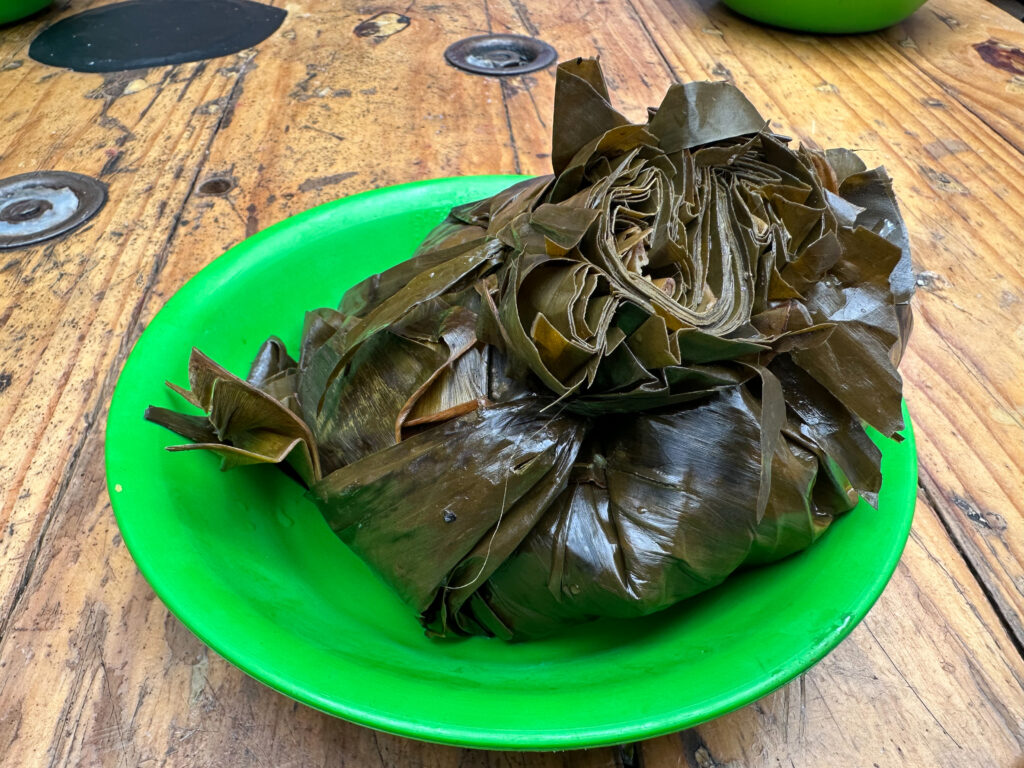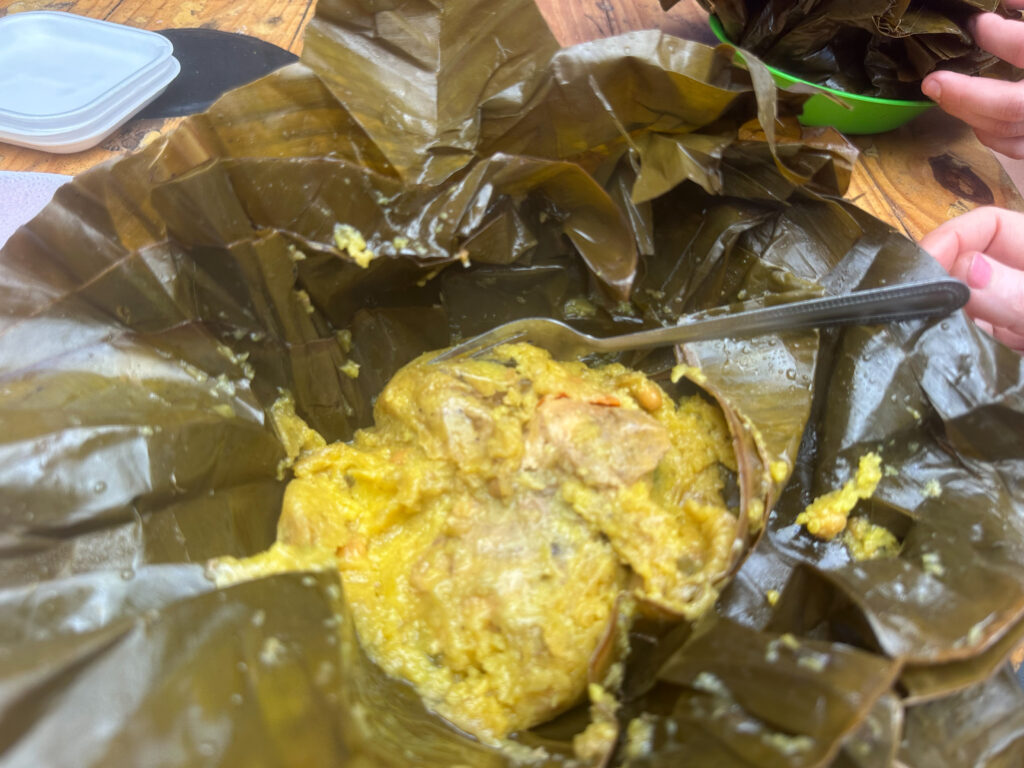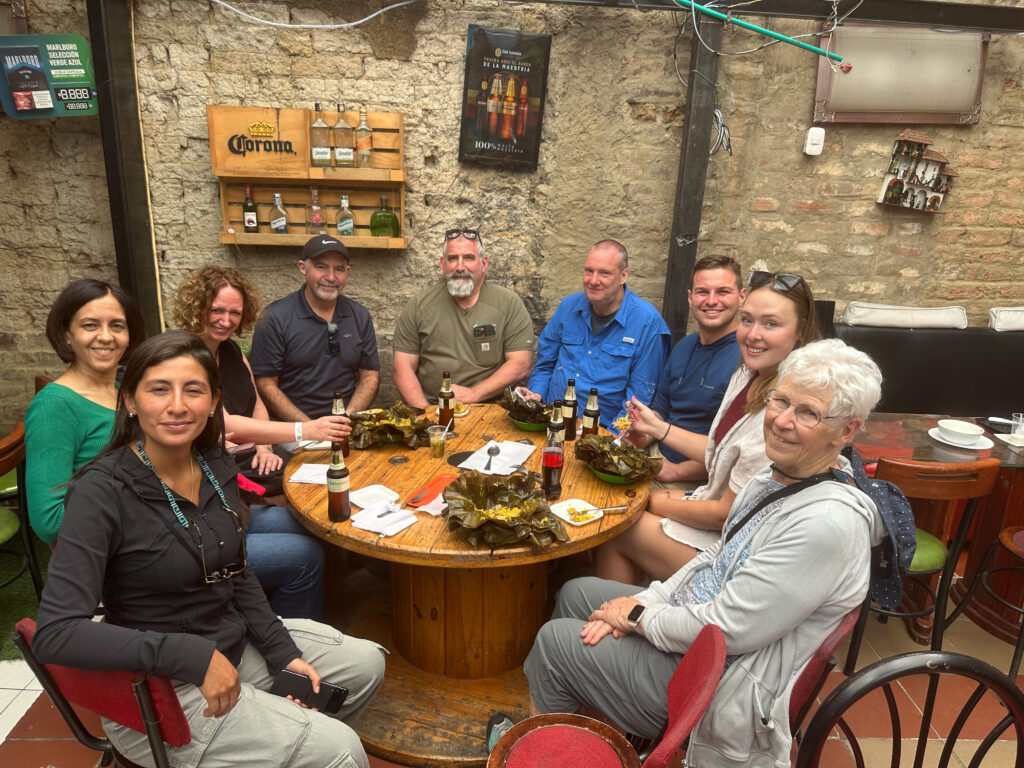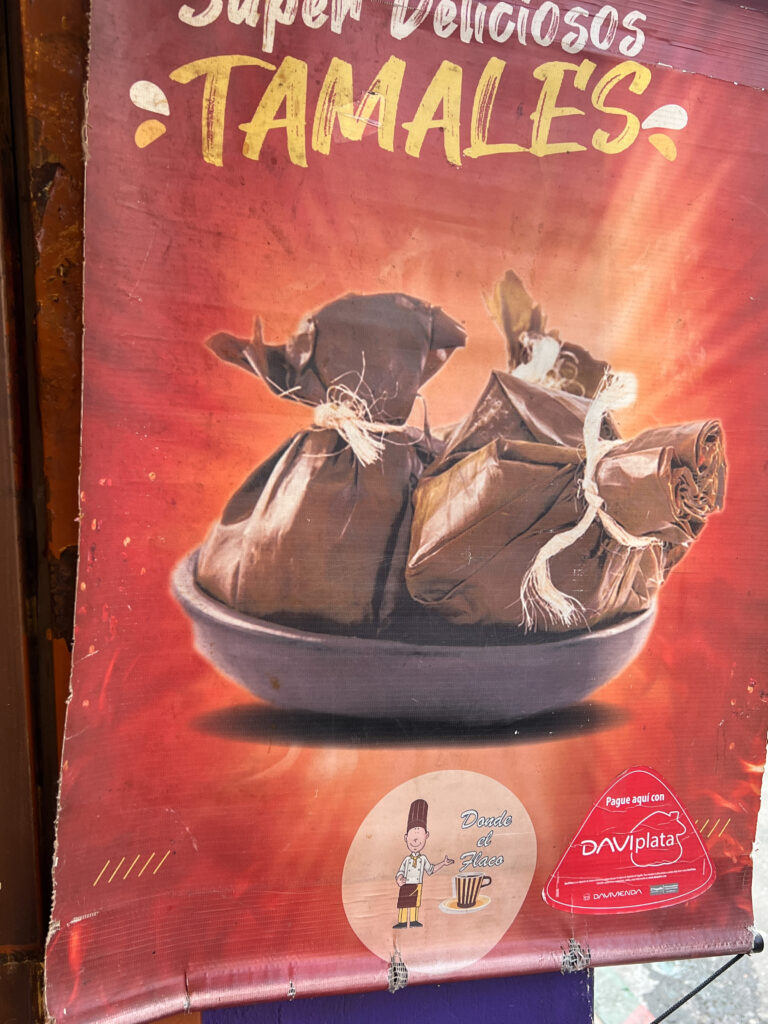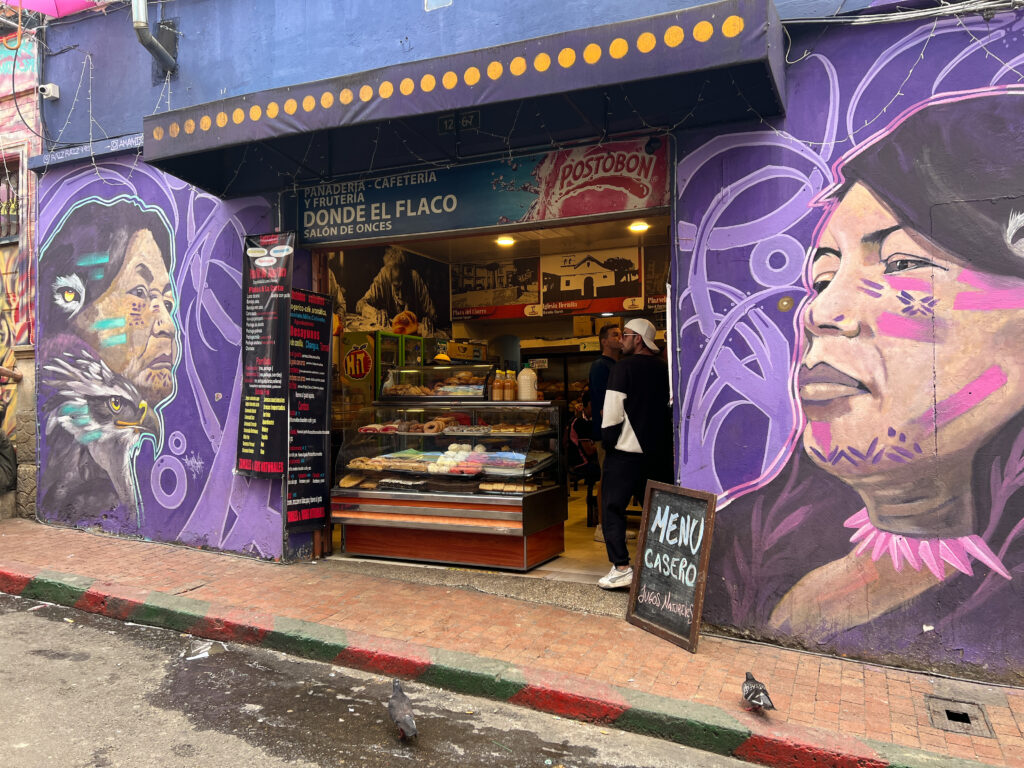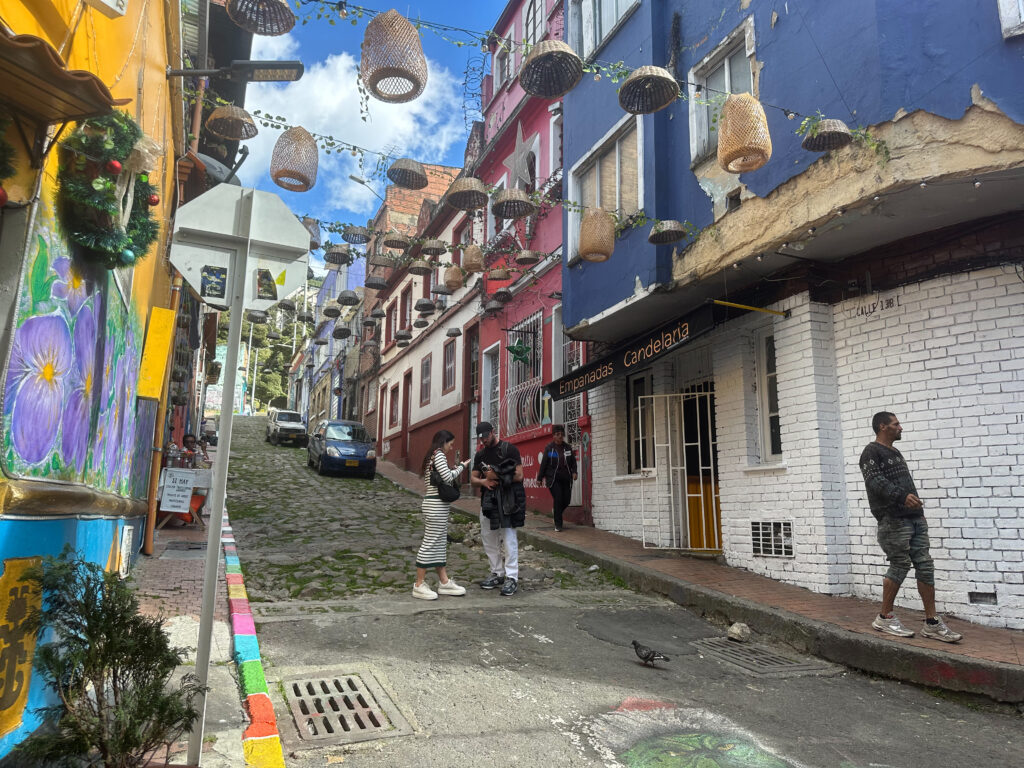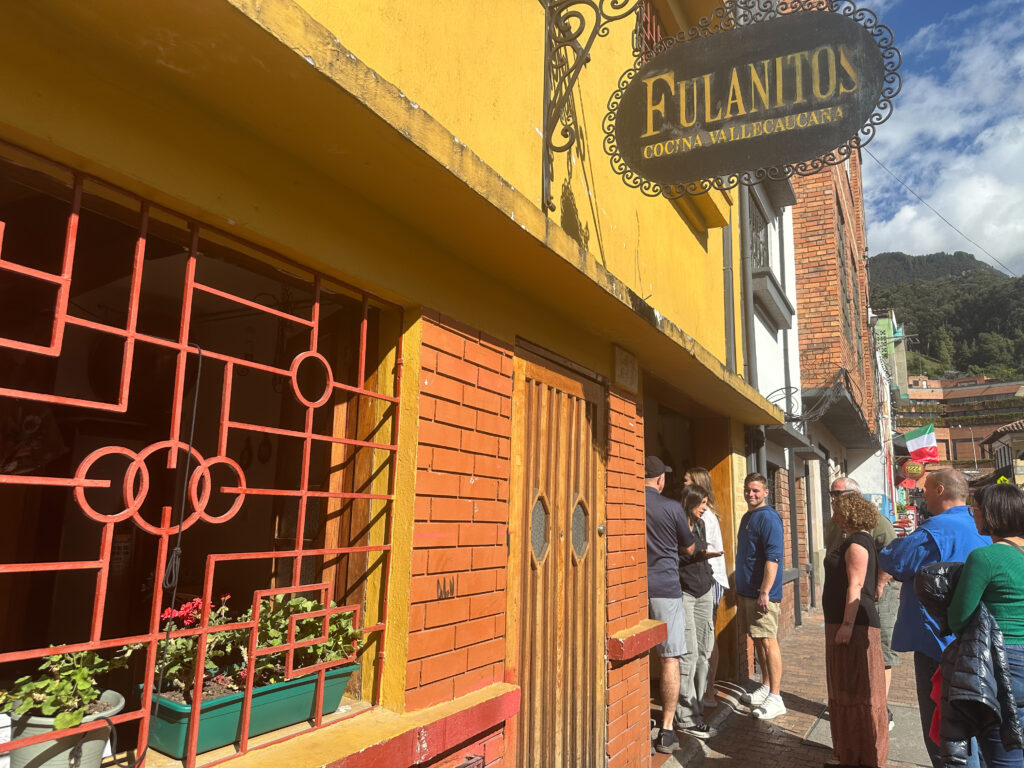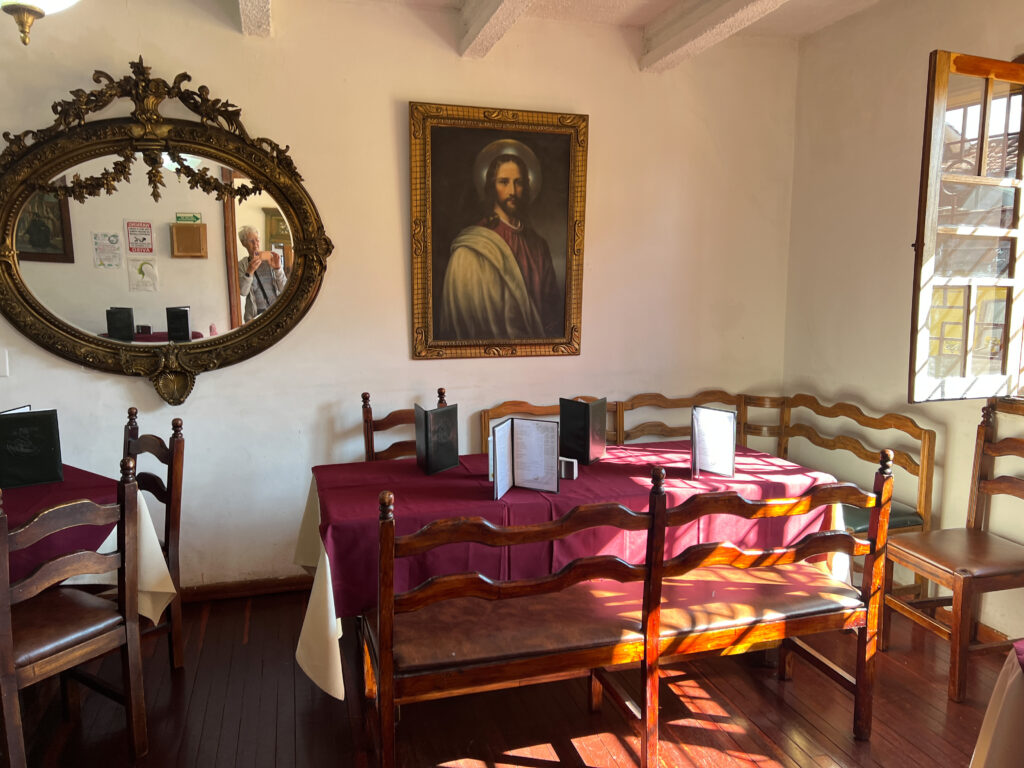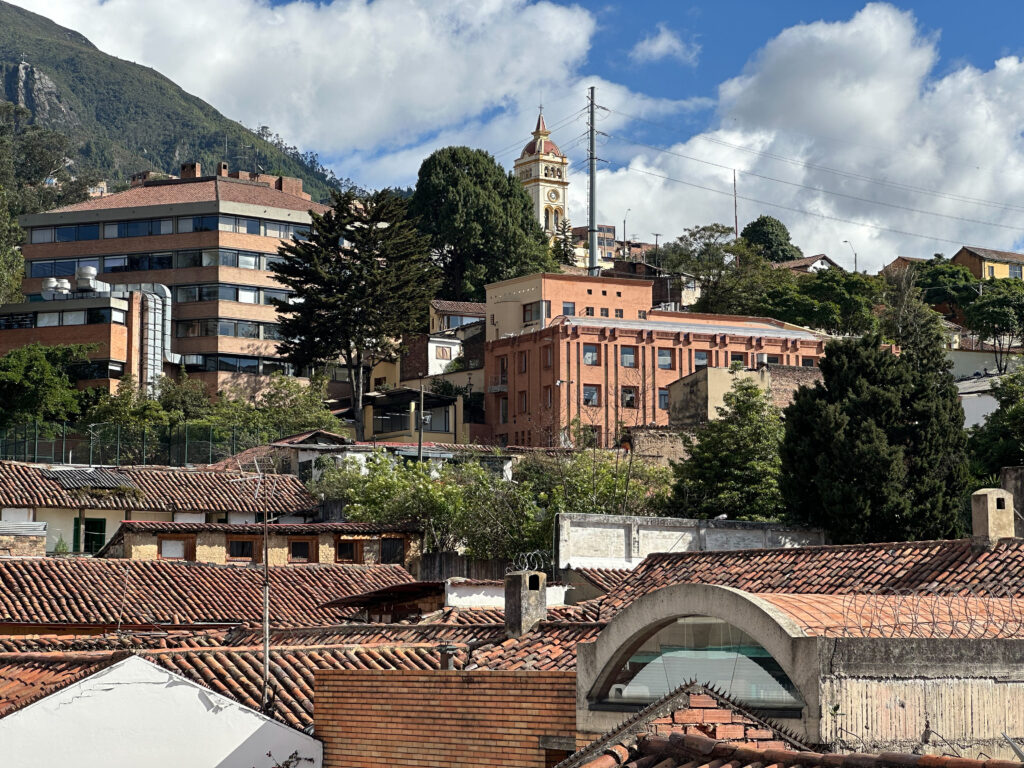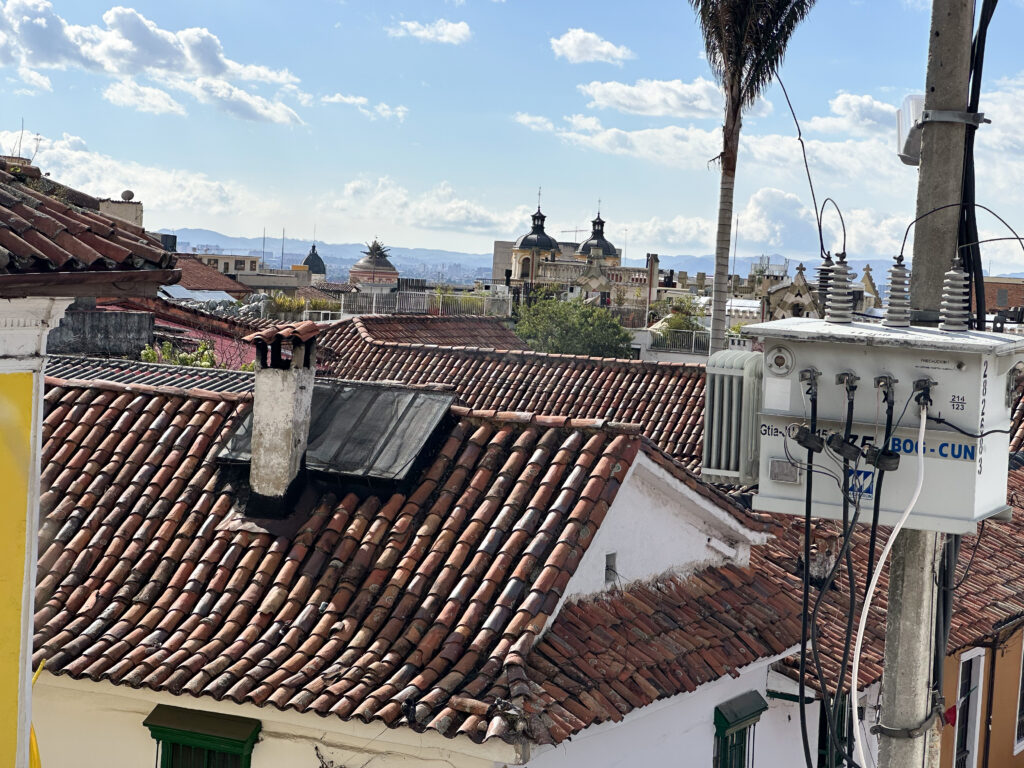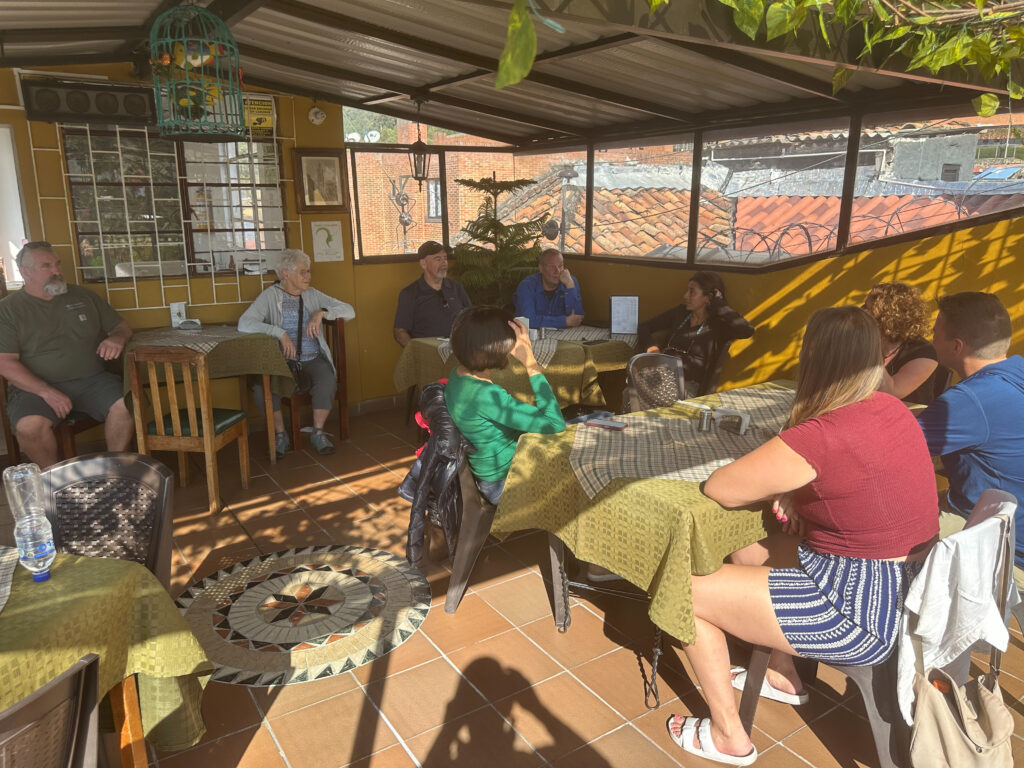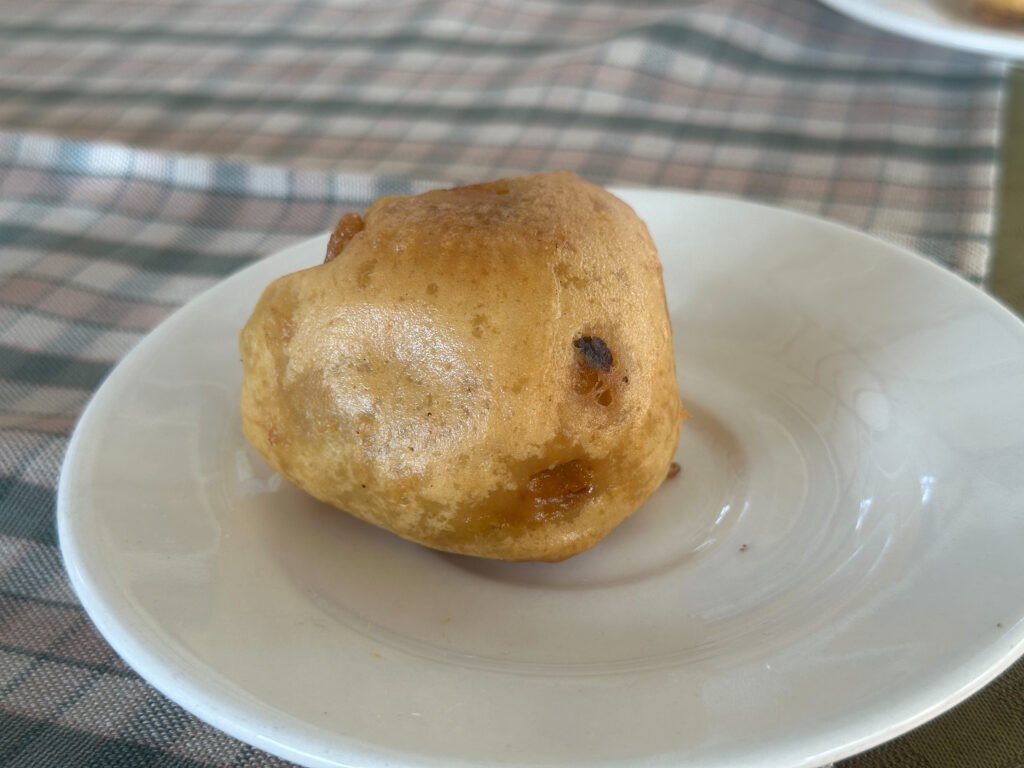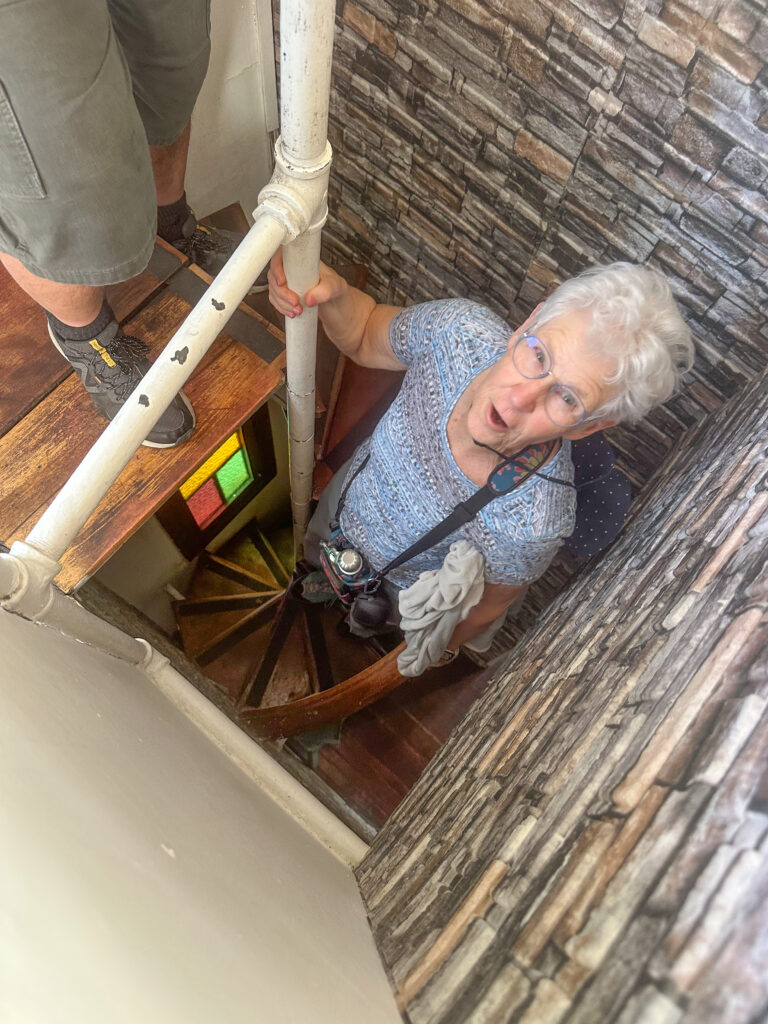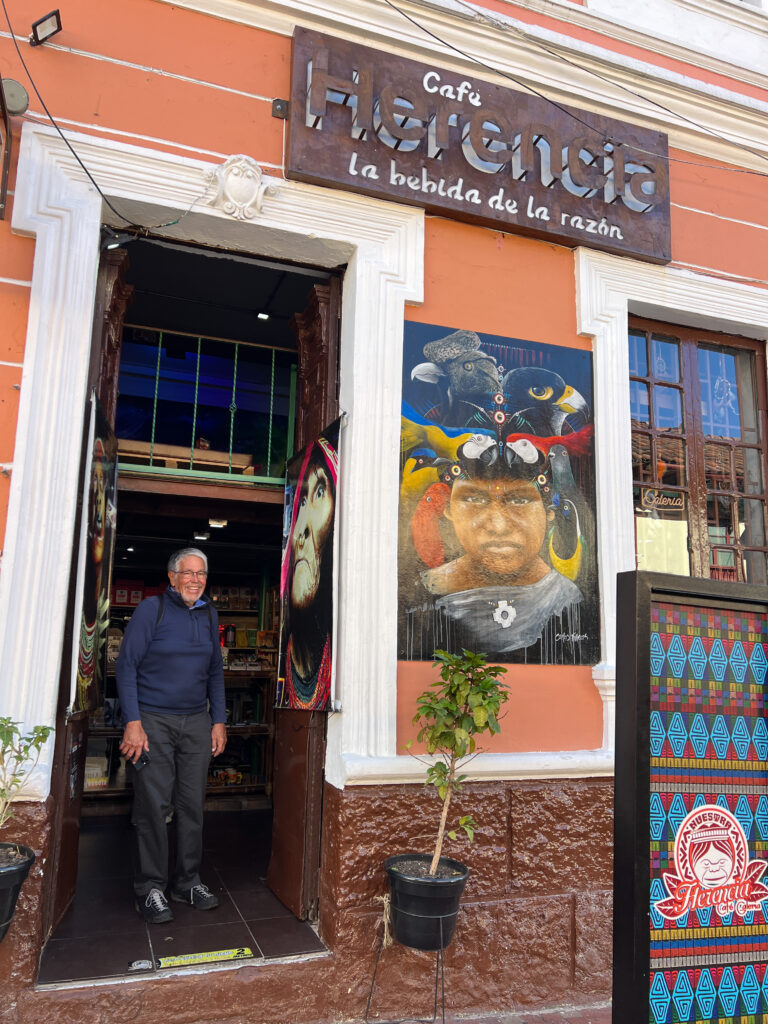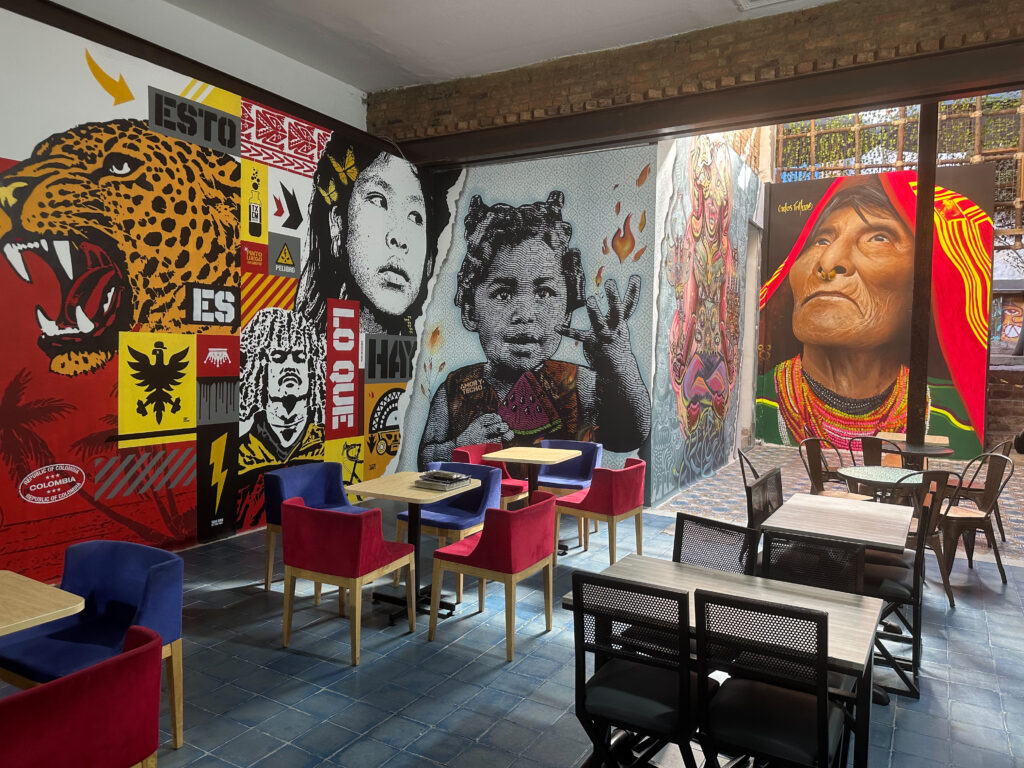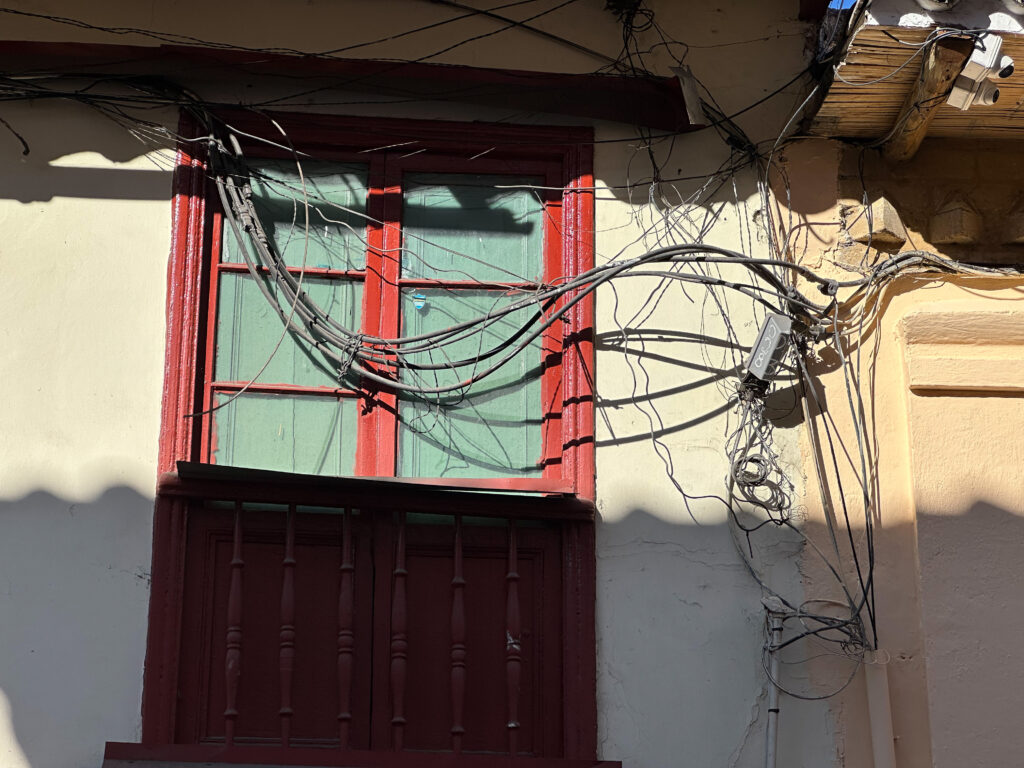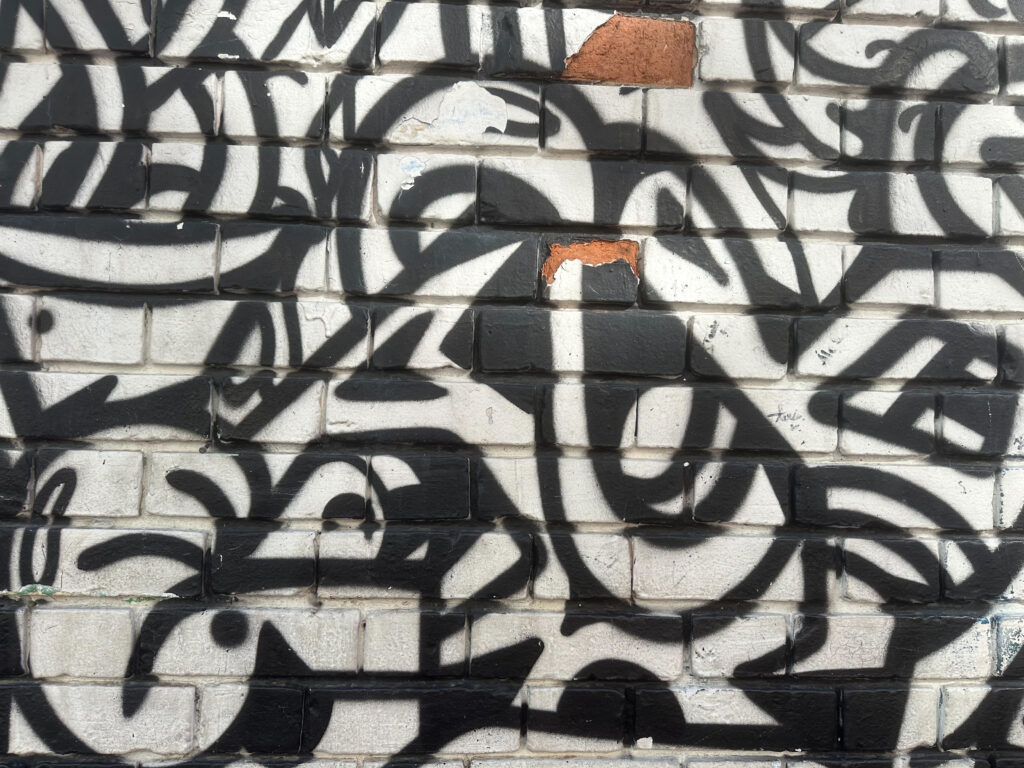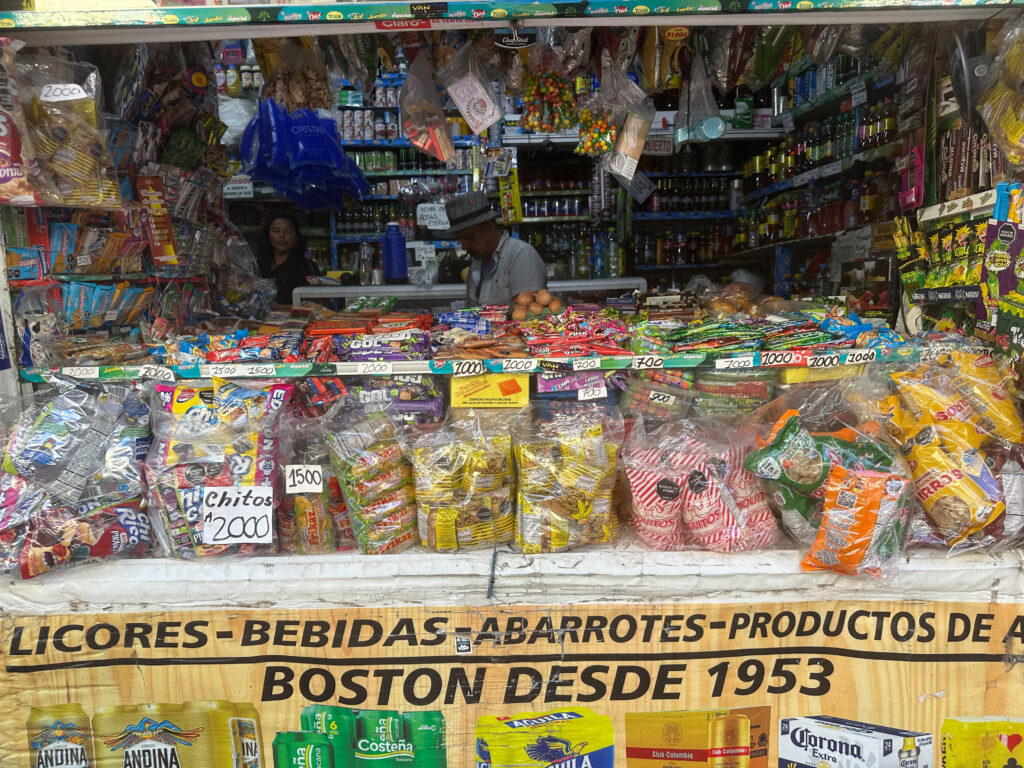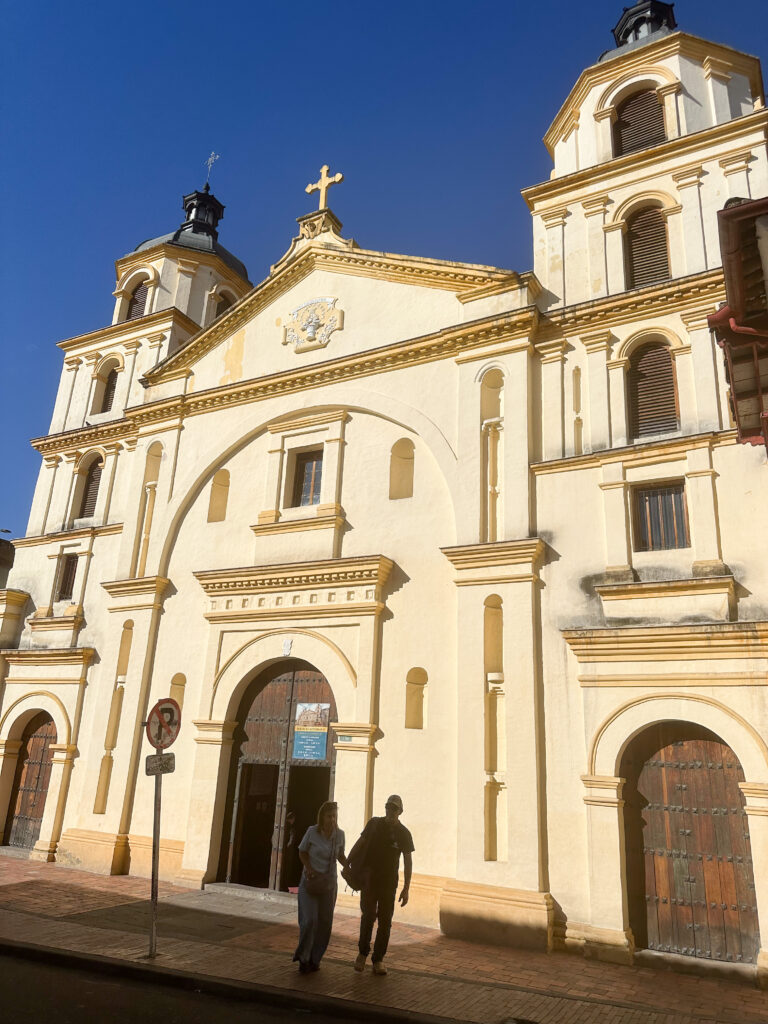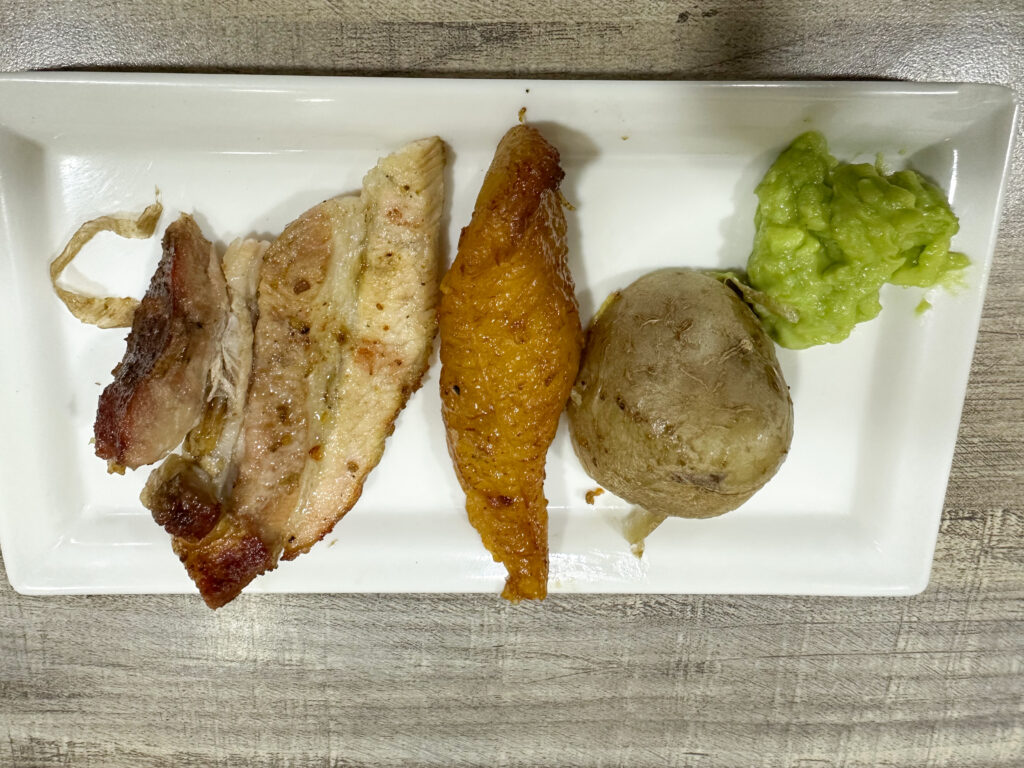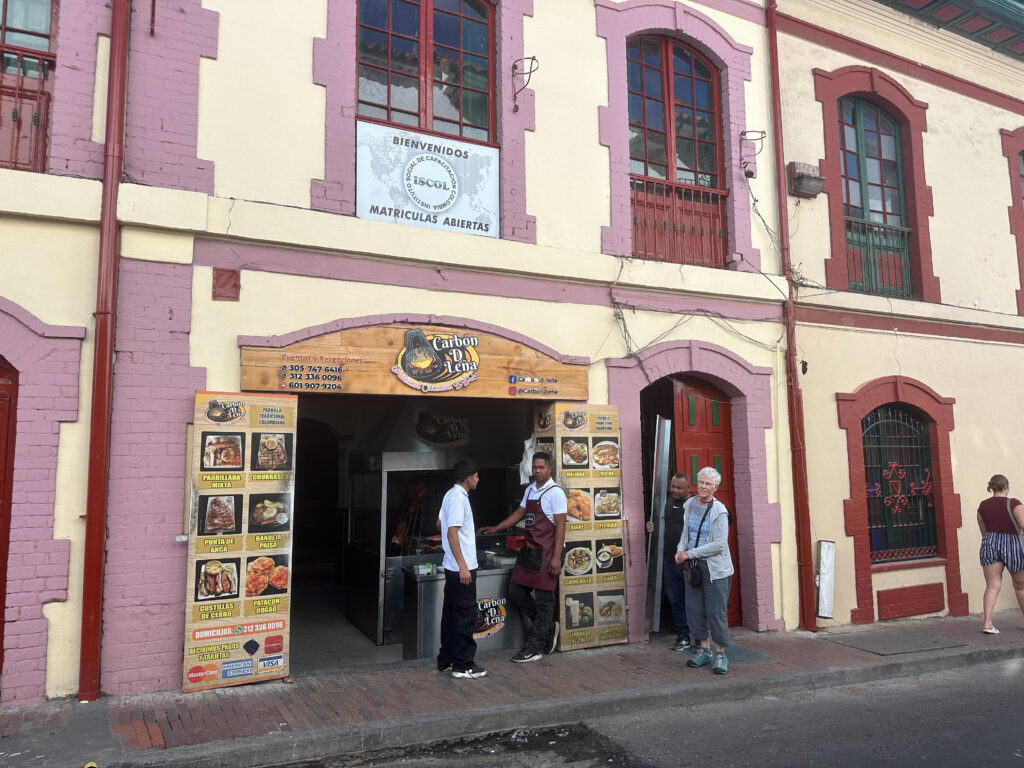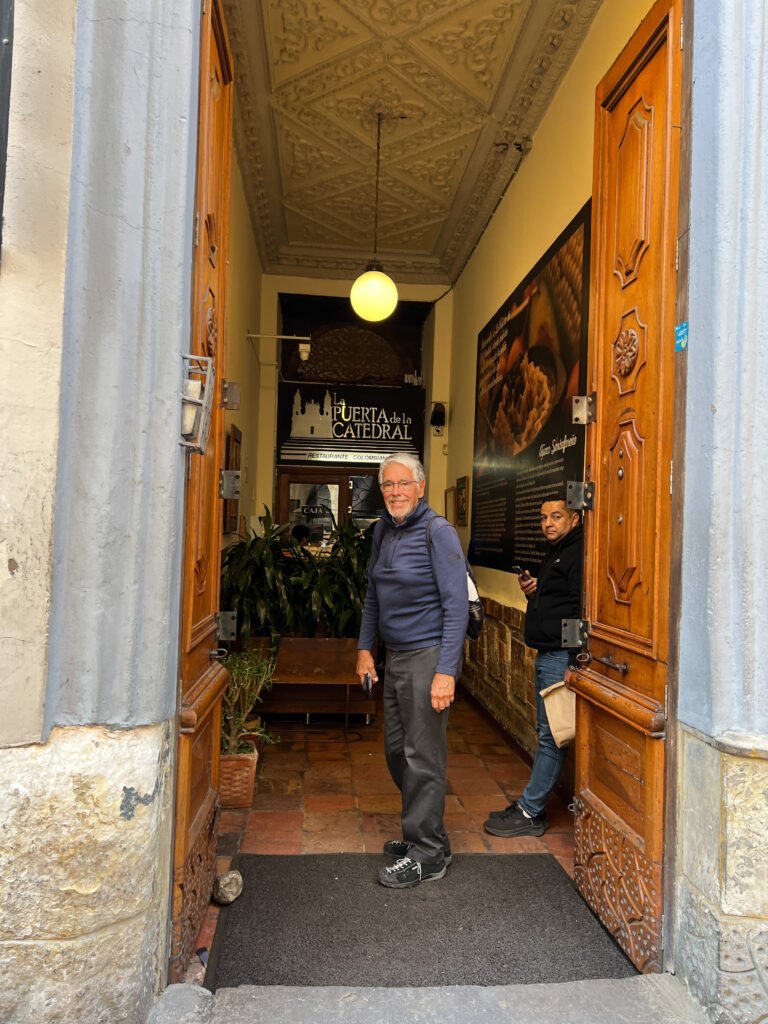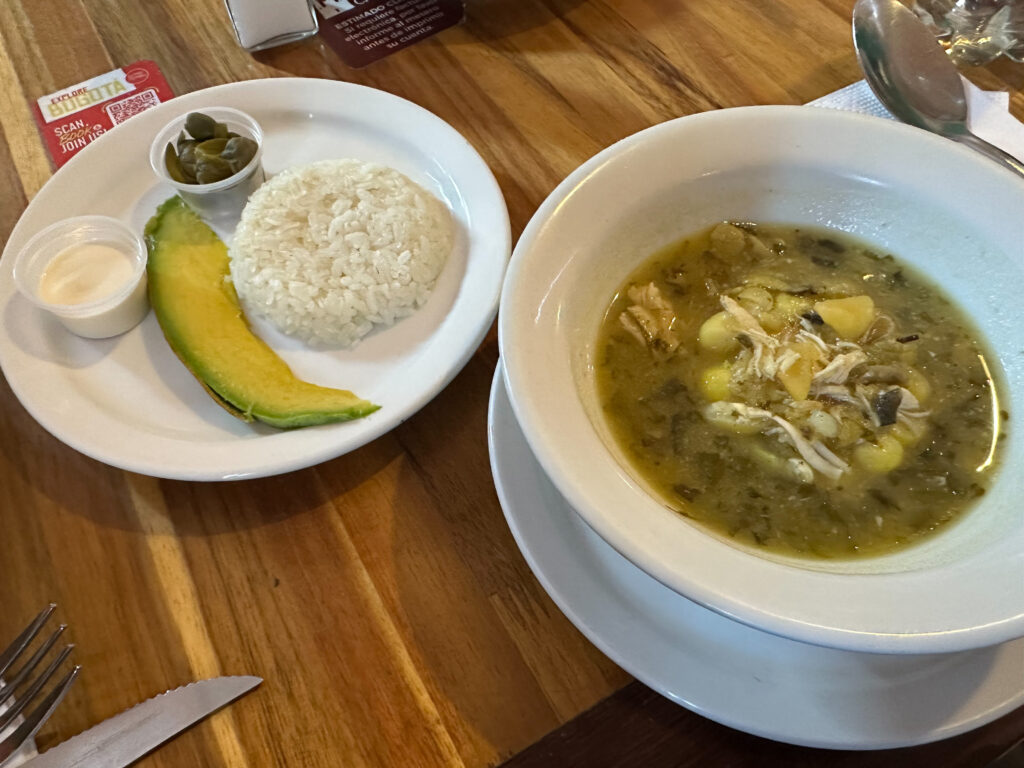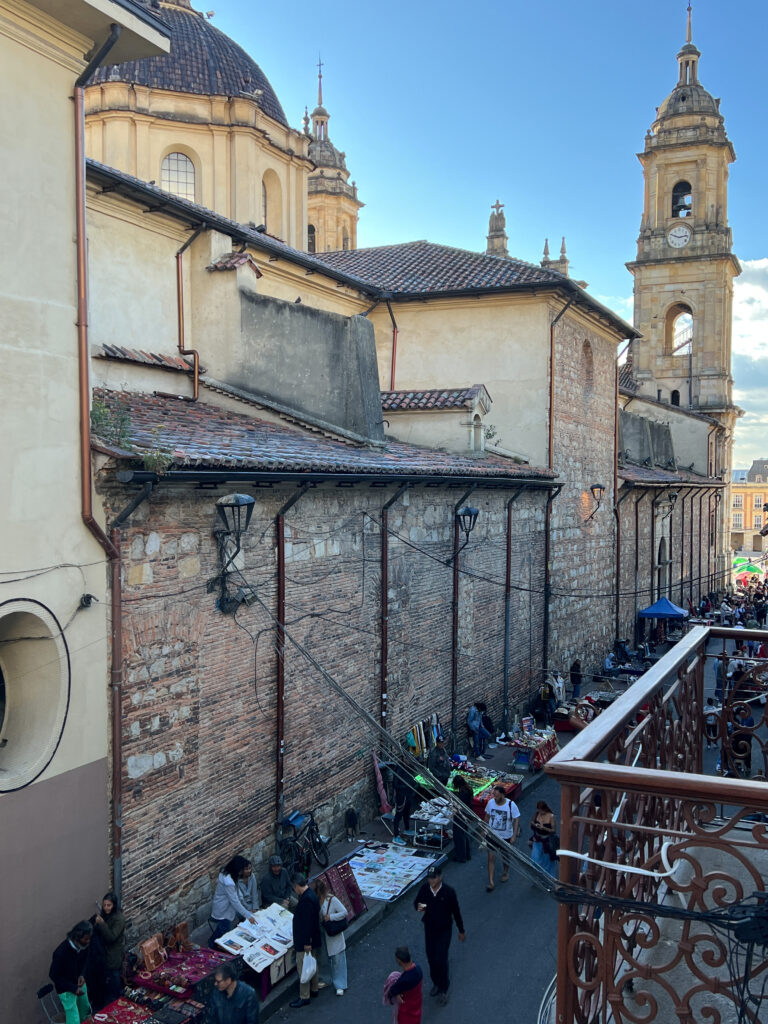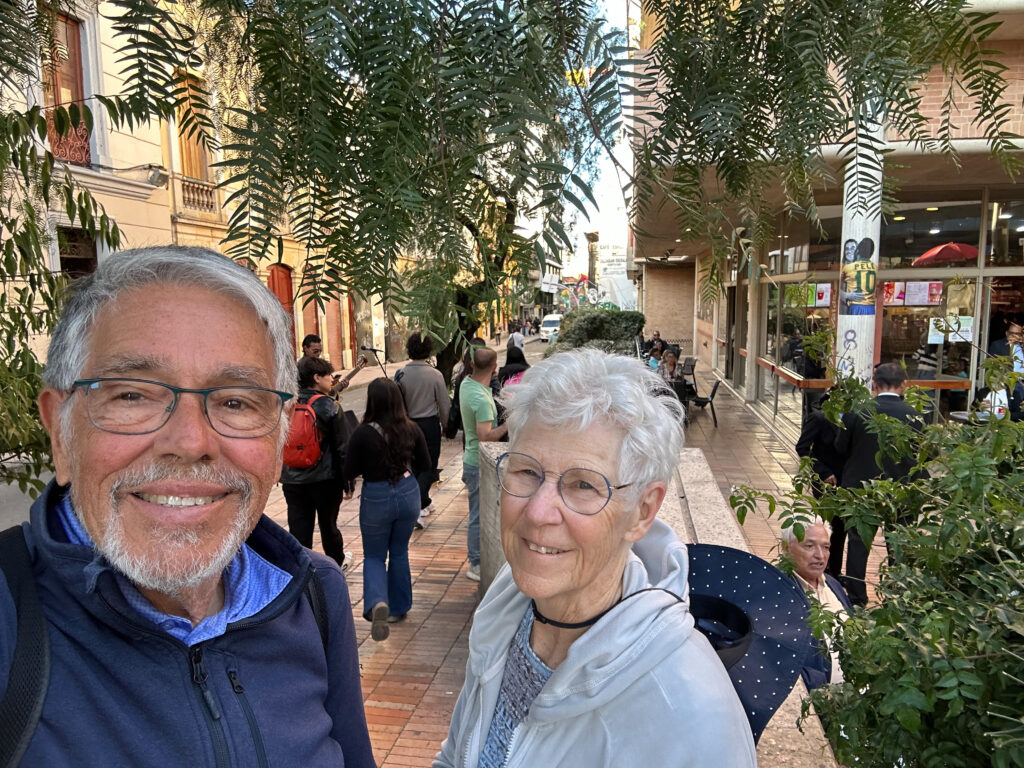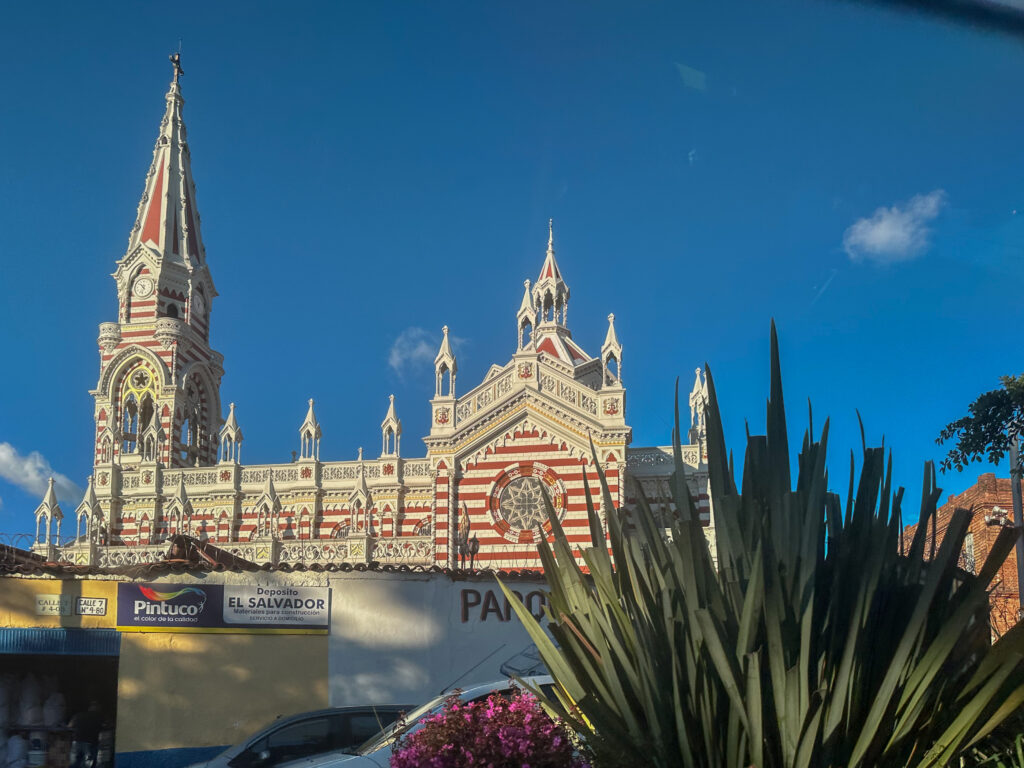We did it in San Jose the other day and we did it in Singapore so we figured we’d try it here in Bogotá: Doing a walking tour that includes sampling local food also serves as a great way to see a city and learn something of its culture.
The result here was slightly different but equally satisfying. In Singapore we sampled different cultures found in that melting pot: Chinese, Indian and Malay and had an equal mix of food, culture and history. San Jose focused on culture and history with tidbit samples of food. Here, it was a seven-course walking banquet with a lesser amount of cultural commentary.
The tour started at 1:30 (we goofed off all morning, having breakfast at 10). It was a group of ten from the U.S. and Canada. Three guys got my attention. They were childhood friends and are traveling together through Columbia for two-plus weeks. So far, they’ve booked three nights in a hostel. After that, who knows? Cali, maybe? Medellin? Wives are at home; this is a guy trip. Another gal on the trip shares tomorrow, January 24, with Judy as their birthday.
Speaking of the hostel, that’s where our tour began: the Cranky Croc Hostel. It’s a 45 minute/$10 Uber ride from our hotel. We got out on a nondescript street. No Cranky Croc to be seen. I asked in my broken Spanish for directions from a lady standing in the doorway of another hostel not 100 yards from ours. Never heard of it. I was googling away and trying to fend off a panhandler when a lady came up, her mother on her arm, and asked in English if she could help. She was most apologetic, embarrassed that visitors would be subject to such behavior. “There are many different layers in our society, some more well-to-do than others.” She shooed him away.
She googled and, like me, determined the hostel should be right in front of us. Sure enough, under a sign about the size of a dinner plate, there was the Croc.
The hostel itself seems quite nice – welcoming and clean. Owned for six years by an Aussie. Probably a notch down scale from our digs at the Four Seasons, price wise.
I wish I could give you the name, recipe and cooking instructions for each of the seven dishes, but I can’t. Each represents food common not just to Bogota but all across Colombia. I’ll have to let the pictures give you an idea. It is the experience that is important, not the details.
We had ceviche, a national favorite. Each Latin American country seems to have their own variation on the theme. There was an empanada-like creation the outside of which was mushed up yucca. Desert, a choice of a fruit concoction sandwich or a fig creation. Everything with a different kind of cheese. A tamale boiled for six hours in a plantain leaf container with rice, chicken, pork and beef. “We eat meat here in Colombia. If someone asks for vegetarian, we say ‘sure, we have chicken.’” There was a dish of beef, plantain, potato and avocado. Another empanada-like creation with more cheese, I think (they started to run together). The last dish was a soup featuring potatoes, corn (on the cob), capers and of course the ubiquitous plantain and yucca chips.
In general, Colombian food has three fundamental characteristics: plantains,, potatoes and rice; cheese; and frying. “It doesn’t make us fat because we have to walk up and down these hills,” our guide explained.
Indeed, Bogotá is nestled in the middle of the west range of the Andes, on the side of the Andes, in fact. Old folks hiking up hill and down at 8,600 feet, me with a queasy stomach (now settled down, thank goodness) kept us puffing and panting through the three and a half hour tour.
One interesting factoid delivered by our guide: When the peace settlement between the government and the FARC was signed, many former cocaine farmers were out of work. Instead, they turned to raising cacao, the base ingredient of chocolate. Craft beer brewing has also become popular.
FARC – The Revolutionary Armed Forces of Colombia – had been fighting the Colombian government since the 1960s. It also controlled much of the cocaine producing regions. Implementation hasn’t been perfect; some fighting by splinter groups continues and the promises of the agreement for reform have not all been fulfilled. But peace has opened up the tourist trade for gringos like us and has led to stability for much of Colombia and an end to the killing that has gone on for decades.
We were impressed by Bogotá the city. Modern, clean bustling (too much traffic, for sure) and the people we encountered quite friendly. The tallest skyscraper in all of Colombia dominates the skyline. Our guide reported, with a sense of Colombian pride, that it was the creation of a bunch of Spaniards from Barcelona and is only 40% occupied.
Everywhere you turn you find street art – graffiti, some might call it. But a lot of it is high-quality artwork and a lot of fun to view as you can see in today’s pictures, with food intermixed.
Our Tauck tour kicks off tomorrow, although in the quixotic arithmetic of tour companies, today was Day 1. We’ll spend the day in Bogotá and leave the next day for Medellin.
